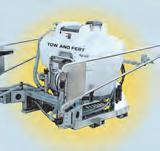Improved cow health?

For a future-proof automated milking system, proven on pastoral farms throughout Australia, GEA’s automated milking system – the DairyRobot R9500, is a proven step in the right direction.







Improved cow health?

For a future-proof automated milking system, proven on pastoral farms throughout Australia, GEA’s automated milking system – the DairyRobot R9500, is a proven step in the right direction.






WINNING EDGE
WINNING EDGE

The JFC Milk Cart Range is the most efficient way of feeding your calves
JFC Milk Karts are the most e cient way of feeding your calves
Kart The JFC Milk Cart Range is the most efficient way of feeding your calves
KART
THE JFC MILK CART ADVANTAGES ARE:
THE JFC MILK CART ADVANTAGES ARE:
340L JFC MILK KARTS
WINNING EDGE JFC MILK CARTS ARE AVAILABLE IN TWO SIZES (170L + 340L)

JFC MILK CARTS ARE AVAILABLE IN TWO SIZES (170L + 340L)
The 340L JFC Milk Kart can mix 2 x 20Kg bags of milk replacer in just 4 minutes.
✔ The 170L model can mix a 20Kg bag of milk replacer in just 4 minutes
✔ The 170L model can mix a 20Kg bag of milk replacer just 4 minutes
KART
✔ EASY Transport of whole milk or milk replacer to calves
✔ EASY Transport of whole milk or milk replacer to calves
Our 340L model features an upgraded pump which can dispense up to 36 litres per minute.
✔ The 340L model can mix 2 x 20Kg bags of milk replacer in just 4 minutes
ARE:
✔ EASY Transport of whole milk or milk replacer to calves



✔ SMOOTH Vortex-enhanced mixing eliminates separate of nutrients/foaming of milk
✔ SMOOTH Vortex-enhanced mixing eliminates separate of nutrients/foaming of milk
✔ SMOOTH Vortex-enhanced mixing eliminates separate of nutrients/foaming of milk
✔ CONTROLLED amount of milk dispensed
✔ The 340L model can mix 2 x 20Kg bags of milk replacer just 4 minutes
This model also includes upgraded castor wheels, a new control box and dispensing nozzle.
Our 170L and 340L models features an upgraded pump which can dispense up to 36 litres per minute. This model also includes upgraded castor wheels, a new control box and dispensing nozzle. These features ensure faster milk delivery time when using the JFC Milk Kart with the pump.
✔ CONTROLLED amount of milk dispensed
✔ CONTROLLED amount of milk dispensed
Our 170L and 340L models features an upgraded pump which can dispense up to 36 litres per minute. This model also includes upgraded castor wheels, a new control box dispensing nozzle. These features ensure faster milk delivery time when using the JFC Milk Kart with the pump.
These features ensure faster milk delivery time when using the JFC Milk Kart with the pump.



Contact ProviCo Rural for information: www.provicorural.com.au, PH: 1300 380 343 email: admin@provicorural.com.au







 BY ISABEL DANDO
BY ISABEL DANDO
AS THE top importer of dairy globally (by volume), a sustained downturn in importing by Chinese buyers has been a dampener on global commodity prices.
Quiet importing demand from China is largely a result of strengthened local milk production and stockpiled product, a legacy of recent lockdowns.
Coupled with changed domestic consumption trends over the same period, this has significantly altered the purchasing activity of Chinese ingredient buyers and prevented a noteworthy re-emergence on to the global dairy market, as many had hoped.

Generally perceived as a key price driver for dairy export commodities, China is not only an important market for Australia, but also for our competing exporting regions of New Zealand, the United States and Europe.

Total imports of Australian dairy into China remained flat over the past two years, equating to about 275,000 tonnes in 2021-22.
Ultra-high temperature milk is Australia’s most exported dairy product to China, and in 2021-22, Australian UHT milk imported into China accounted for 47 per cent of all Australian dairy imported (by volume). Additionally, this milk makes up 17 per cent of all milk imported into China.



Australian milk exports to China have surged 58 per cent over the past five years, helped in part by an increased preference for pre-packaged UHT milk by Chinese consumers during COVID-19 lockdowns.
Imported UHT milk typically sits at a competitive price point to domestically produced product, and exports to the market are expected to continue growing.

In line with increased local production, total exports of whole milk powder and skim milk powder to China declined 16 per cent and 14 per cent respectively, in 2021-22.

While WMP exports from Australia also fell over this period, SMP exports grew nine per cent in contrast.
Imports of Australian SMP into China have grown 112 per cent during the past five years, rising to become the second most exported dairy product behind UHT milk.


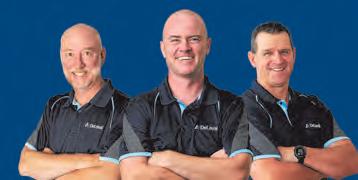

Chinese buyers reportedly appreciate the consistent quality of Australian milk powders.
Despite broader political tensions between China and Australia in recent years, Australia has maintained its position as a key supplier of dairy, with total exports to China growing 45 per cent during the past five years.

China has grown over recent decades to become the world’s largest dairy importer and therefore so too has its influence on global dairy commodity prices.
While quiet Chinese demand has been a key driver of the recent downturn, some positivity remains around its buying returning later in the year.
This is tipped to occur alongside recovering domestic consumption and the utilisation of domestic stockpiles and could provide some support to global commodities during this time of overall quiet global demand.
For more information on the China market and other key export markets, you can access and subscribe to Dairy Australia’s market briefs here: https://www.dairyaustralia.com. au/industry-statistics/industry-reports/ international-market-briefs







WHEN ZOE and Jared McNair took possession of their own dairy farm in December 2021, it was with a real sense of achievement, after all, Jared had been striving for this moment since he first entered the dairy industry, as a young 18-year-old, back in the 1990s.
The couple, along with their three children Abbie, Will and Edward are now living outtheir own dairy dream on 224 hectares just a short drive from Nathalia, in northern Victoria.



The decision to buy came after the farm they were share farming was sold to a corporate and they decided it was time to head out on their own.
At the time there wasn’t a lot on the market and really it was only by chance they ended up where they are today.
“We looked at farms in Kyabram and Wangaratta and then someone mentioned this place, and even though it wasn’t on the market at the time, we thought we didn’t have much to lose — lucky for us the previous owners decided to sell and here we are,” Zoe said.
After selling 500 of their 800-cow herd to a farm in Tasmania, they were able to get started.

While the farm had previously been a dairy farm, it hadn’t seen a milking cow for six years, so there was a fair bit of work to do before they could get milking.
“A lot of areas didn’t have troughs or fences and there wasn’t a blade of green grass anywhere, so it was a challenge getting started,” Jared said.
The dairy needed updating which included installation of stall gates, cup removers and a new vat.
The couple milked their first cow on the new property at the end of January 2022.
Luckily, they were able to walk their herd to
the new farm, the majority of which were dry at the time.
Zoe laughs as she remembers the first milking taking four hours to milk just 40 cows.
“Our cows came from a rotary, so it took a bit of getting used to,” Zoe said.
The seasonal herd is calved in autumn which not only suits the farm, but also the family lifestyle.
“We can take a bit of time off over summer with the kids and the two months the cows are dry flies by pretty quickly,” Zoe said.
Jared said the crossbreed herd aligns itself well to seasonal calving and high fertility is the key to success, there is no room for any passengers.
“We had been seasonal calving at the previous farm and decided to continue. In-calf rates have to be over 90 per cent to make it work and you have to be disciplined and cull anything that doesn’t get in calf,” Jared said.
While this is the philosophy they strictly follow with the herd, a few favourites have been given a second chance and sent to Zoe’s sister’s farm for the dry period.
Jared said a good crossbreed cow ticked all the boxes and he liked his cows medium framed and not too leggy.
The couple has no plans to milk any more cows than 280 at this stage, they think that number suits their farm size well and also allows them to grow out a few ‘beefies’ for additional income.
The farm is sown down to a mixture of summer crops, multi species pasture and oats and there are two operational centre pivots which water 80ha.
The couple is looking at sowing half this area to lucerne in the future.
“One of our focuses is to build up a healthy feed bank ahead of us,” Jared said.
Like all farmers, the couple is busy looking at ways to cut its input costs and this year they
are looking to make their own bio-ferments as well as to continue to apply bio-stimulants instead of synthetic fertilisers.
Zoe has always had an interest in agriculture, she has successfully grown a wide range of Australian natives for the cut flower market for years.

The couple decided to give the multi species a go after attending a holistic management course and speaking to a number of farmers growing multi species pastures.
“We are wanting to look after our soils as well as being able to grow healthy pastures/ crops for our cows,” Zoe said.

“It has been an interesting first year for us and we have been able to grow a fair bit more grass than I thought we would,” Jared said.
For now, they are focusing on getting the
141ha milking platform under control before they look to what is next.
The couple do have a full-time and part-time worker to help them out and of course a bit of free labour with the kids.
Jared said it had been great to see the two older kids, Abbie and Will, help out the farm when they want to as well.
“Jared and I milk every second weekend to give the workers time off and it is all working pretty well so far,” Zoe said.
Looking back on their first year, the couple agree despite the hard work, their journey so far has been hugely rewarding.
“There have been no short cuts and we have had to work hard to get where we are today, but you have to earn the reward and for our family it’s this dairy farm,” Jared said.
The dairy was given a makeover including the addition of stall gates, cup removers and a new vat. New pastures on the McNair dairy farm are benefitting from bio-fermerents and biostimulants as they look at growing multi species pastures. High in-calf rates are the key to running a successful, seasonable calving herd which for the McNairs, includes a mixture of Jersey crossbreeds and a few Holstein cows.A VISITING New Zealand pasture-based flexible milking options expert is predicting a surge of interest in different milking routines in Australia.
FarmWise farm consultant Brent Boyce, who fostered and developed the concept of flexible milking options in his home country, toured Australia in April and found growing interest in the concept.
Brent, who coined the terms 3-in-2 and 10-in-7 milkings, is encouraging all farmers to look at different options that could create lifestyle and profitability benefits.
“It’s a bit foreign for some farmers in Australia but there’s a lot of surprise about what is possible,” Brent said.
“It means you can have a sleep-in on a dairy farm — that’s something unheard of for centuries.”
Less than 40 per cent of New Zealand farmers milk twice a day all year and Mr Boyce encourages Australian farmers to at least look at the options.


“It’s coming. There’s a tsunami of interest because people can see they can make a difference in their lives and businesses,” Brent said.
“We live in a volatile climate and we have to be flexible in how we approach businesses. I don’t tell a farmer what to do but I make a lot of suggestions.”
Brent said farmers who had a robust pasture-based dairy system wouldn’t lose production if they follow some simple ways of changing but they stand to make more money, improve their mental health, gain significant lifestyle benefits and get happier and healthier cows.

“People ask if they will lose production, when I answer that you’ll make more profit it probably answers the question for them,” he said.
FarmWise is a consultancy business within Livestock Improvement Corporation and Brent’s Australian tour was supported by the DemoDAIRY Foundation.
Brent has 28 years of experience as a dairy farm consultant, including being named NZ’s farm consultant of the year in 2016.
Brent describes flexible milking as a “game changer”. He came up with the term ‘3-in-2’ in 2001, while working with a farmer who had reverted to 16-hour milkings.
“He was doing cups on at 5am, 9pm and 1pm the next day but it was too tough. He was getting smashed and the cows were struggling,” he said.
“I said to myself – does it have to be a true 16-hour milking – it could be a different split, so we did 5am, 7pm and 11am the next day which became a 14-16-18-hour split.”
The concept gained traction.
“More farmers thought it was a good idea from Christmas because the cows didn’t lose production because they’d already peaked. I called it 3-in-2 and that became internationally quite famous.”
The idea grew in popularity after Brent presented his ideas as a 2007 once-a-day milking conference.
“People were trying to work out how to do once-a-day. I was more of a curiosity, but by the end of it they were saying something is going on here.”
Fifteen per cent of Brent’s clients milk once-a-day.



“I’m a fan of all systems — every farm is different,” he said.

“We tried to find something that would work
better for people and 3-in-2 did its job for many years.”
In 2016, as part of the farm consultant of the year award, Brent was asked to re-write the papers on 3-in-2, further expanding interest in flexibility.
“It’s an incredible change,” he said.
“It’s across every different system and every type of dairy farm.”

In 2018 at a FarmWise conference, senior LIC scientist Steve Davis spoke on udder health.
“This was the moment I realised we could do even more,” Brent said.
“Steve said it was possible to milk cows twice a day, twice a week and stimulate the udders enough and have similar production. The afternoon milkings rescue the udder tissue memory so it thinks it’s on twice a day.
“It fired me up. We had 14-a-week on twice a day, seven-a-week once a day or in the middle 3-in-2 was 10-and-a-half milkings a week. I had a lightbulb moment — could we do other
formats such as 11-in-7 or 10-in-7 and fill in the gaps.”







Brent wrote a paper on 10-in-7 milking, with Monday, Wednesday and Friday like normal twice a day, the other days at 10am.
“This taps into sport for young people or for going out on Friday and Saturday nights,” Brent said.
“The issue we have as an industry is we’re a 24-7 business in a weekend-based society. Dairy farming is a tough way to make a living and we need to become weekend centric. This way we have a life.
“10-in7 has gone crazy and it’s gone around the world.”

He believes any farm could easily make the adjustment by adopting a 48-hour feeding system.
“It’s all about the genetics — not the genetics of the cows, the genetics of the people,” he said.
“The cows are way more flexible than we are so we have to adjust ourselves. You can choose any milking regime.”

HAVING DEDICATED a career to improving outcomes for dairy farmers across the Southern Hemisphere, I am rather tired of the industry being used as a punching bag in climate/greenhouse gas discussions.
True, cows emit methane — but so have ruminants throughout the animal kingdom throughout history. More importantly, methane from dairy cattle is not the issue we are led to believe it is.
Let me explain.
Agriculture contributes 13 to 16 per cent of total greenhouse gas emissions (in CO2 equivalents). Of this, about one-tenth is attributed to dairy farming, which is just 1.6 per cent of national GHG emissions, so our cows should barely rate a mention.
The issue is that methane is a disproportionate 25 per cent to 30 per cent of the total agricultural GHG output, and an extraordinary 60 to 70 per cent of dairy farm GHG emissions. It is the last figure that puts dairy in the sights of the activists.
However, there is a bit more to this story
that rarely makes the news. Methane produced by ruminants is old carbon.
Unlike coal and gas where the methane is new to our environment’s carbon pool having been previously locked up in ancient subterranean storages, methane from cows was CO2 circulating yesterday.
Furthermore, in another 10 years, this methane will be CO2 again. In effect, if the global ruminant herd is stable, methane from animal production systems should not be counted — it is a zero-sum equation.
Unfortunately, the genuine methane polluters (coal and gas) are more important to GDP and thus have more political clout, so we remain the focus of climate alarmists.
As a rule, I like to see a problem as an opportunity, and in this case, I am reminded of some sage advice received early in my career — never waste a crisis.
And this crisis — notwithstanding, it is political rather than factual — is certainly an opportunity.
There is no doubt agriculture, and dairy, can be done better and can quickly transition to a business that consumes GHG rather than contributes them.
The secret is in the grass, forages and grain grown for our livestock, particularly grazed pasture.
There are compelling reasons all dairy farmers should seek to minimise GHG emissions and all other contributions to environmental degradation — chemical residues, nitrogen, and phosphorus excesses in particular.

Forget looming legislation, social licence, or any other enforced change — it’s just the right thing to do.
Better still, we now know beyond any reasonable doubt, that transitioning to a sustainable management system is more productive and more profitable than chemicaldependent farming.
We know for example:
ɋ That of the N applied as fertiliser, only 26 per cent is used by the plant — the rest is lost to the environment.
ɋ That one-third of the energy from plant photosynthesis is used to convert N fertiliser to an organic form before the plant can use it — what if we eliminated that step — yields would double.
ɋ That plants have very low requirements for P — just enough to keep their energy-producing machinery ticking over. They need a little P — about one-tenth of what we apply — in the right form all of the time. Thus, about 90 per cent of P applied is wasted.
ɋ Water is stored in the soil within the humus fraction. Humus is destroyed by cultivation and N fertiliser. More humus equals more soil water and increased water use efficiency. There are many more, and over the next few months I will reveal a path by which assemble these into a process by which to transition your farm from chemical dependence to a sustainable, C and N sequestering machine without compromising productivity or profitability. Using free natural resources as the principal inputs, dairy farms can be net consumers of GHG and lead an agricultural revolution that saves the planet.
Dr Les Sandles is a renowned thought leader and provocateur in the dairy industry. Best known for his role in revolutionising nutritional and pasture management practices, Les has turned his attention to the ‘last frontier’ — transmogrifying the forage production system into a C-munching machine.





Never miss a heat. Know exactly when to inseminate. CowManager ear sensors identify peak heats, non-cycling cows, pregnant cows, and even potential abortions. Let the system do the heat detecting for you and kiss tail paint and other labour-heavy tools goodbye, clearing op your schedule for other on-farm tasks or valuable family time. www.cowmanager.com





















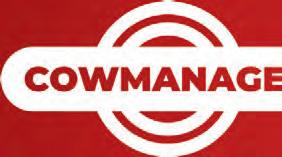






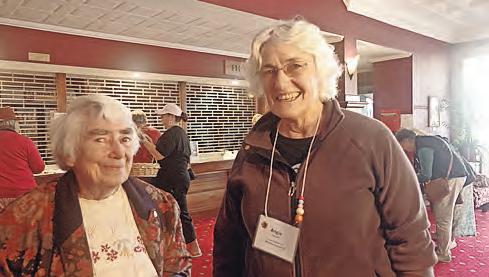
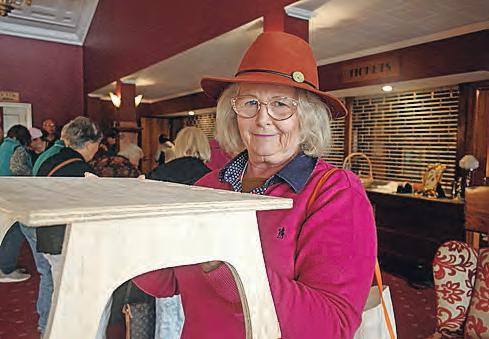
 BY JEANETTE SEVERS
BY JEANETTE SEVERS
THIS YEAR’S annual Women on Farms gathering was held at Yarram on March 24 to 26, with about 125 women attending from across Victoria.


Succession planning was the theme of a confe rence conversation on the Friday afternoon.
It also became the theme of conversation on Sunday morning, with discussion about whether the gathering should be annual or biannual, and the responsibility for storage and retelling of the gathering’s history.

In the time between, attendees participated in a number of tours of the surrounding country on Saturday and workshops on Sunday.
Murals were highlighted, given Yarram (in south-east Gippsland) is home to many public art installations.

There was an exhibition of Ag Art Wear from exhibitors at the Elmore Field Days. Ag Art Wear is made by amateur clothes designers using materials commonly found on farms to create clothing and accessories.
After 20 years, Elmore Field Days has ceased the Ag Art Wear competition, but it continues at places like AgFest in Tasmania and Riverland Field Days.
Kate and Nala Wignall from Port Albert in front of one of the murals on public buildings in Yarram. Photos: Jeanette Severs Janet Staben from Warragul and Jodi Fry from Port Fairy. Chanel Bowden from Won Wron with her flower arrangement. Susan Rowbottom from St Helens (Victoria) made a small table in the woodworking workshop. Ayron Teed from Harcourt and Angie Gutowski from Yarram. Rosa Wedmore of Bunyip, Heather Wehee from Cranbourne South and Judy Gallie from Alexandra sampled the morning tea. Jill Henderson from Trentham and Jenny Poon from Briagolong looking at the Ag Artwear on display. Catharina Versteeg from Won Wron, Lien Budis from Pakenham with her flower arrangement and Christine Rippon from Mt Gambier. Lorraine Trewick, co-ordinator of the Elmore Field Days Ag Artwear competition and exhibition, with some of the installations from amateur designers from past years. The front outfit, a short dress and hat, is the creation of Betty Park of Bairnsdale. Lorraine holds a dress made by dairy farmer Katrina Christie from Nanneella. Ebony Cook from Devon North with Ruth Kinsella and Jenny Sharp, both from Rosedale. Lois Binding from Koo Wee Rup, with Helen Hasty and Rosemary Trease, both from Mardan, at the flower arranging workshop.



















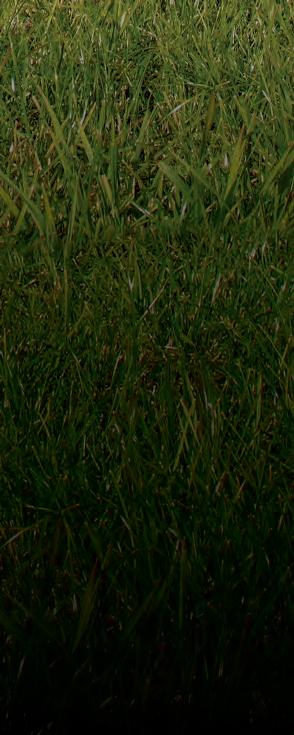




















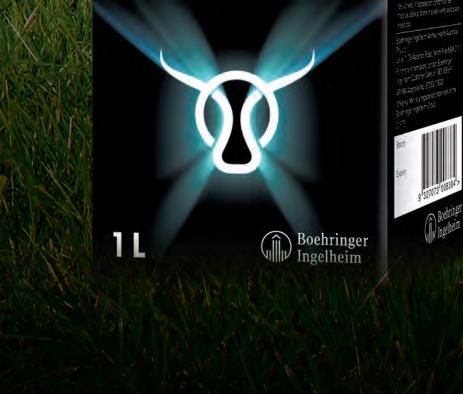





WHEN LUCY Collins was five years old, the late Max Jelbart, a Nuffield Farming Scholar and member of the Nuffield Australia Investment Committee, gave Lucy her first
calf. Many years later, Lucy is a Nuffield Scholar herself.
“I’m really proud to be part of something that Max was a part of. He gave me my first dairy calf that I named Barbie after his brilliant wife Barbe,” Lucy said.
“The way he and Barbe gave back to the dairy
community was humbling. I’ve always known what Nuffield was because of him, and thought it must be something pretty special if he’s a part of it.”
Lucy grew up in South Gippsland and now lives in Dixie, in western Victoria, working alongside her husband Matthew on the family’s dairy farm.
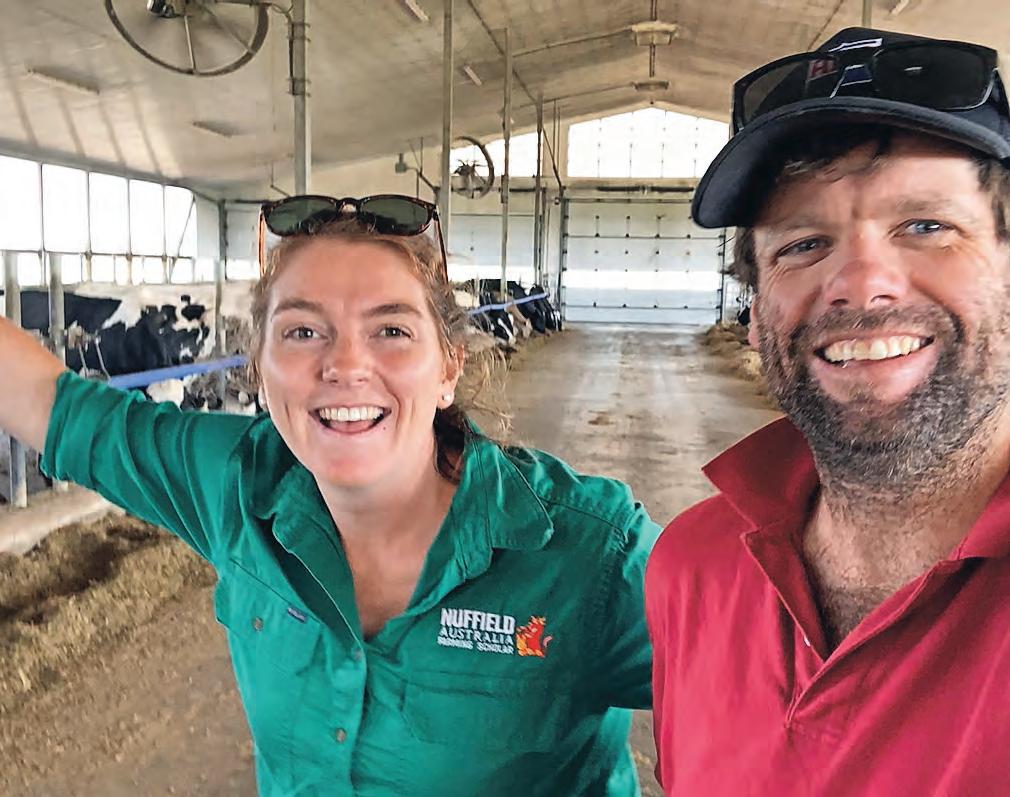

She is also putting the finishing touches on a Masters in Veterinary Science (Dairy) at Melbourne University, focusing on public perceptions and welfare enhancement in the Australian dairy industry.
“I had clients in northern Victoria that were supplying milk to a processor who required annual welfare audits. The welfare assessment program that was being used wasn’t fit for purpose in a pasture-based dairy system, and the farmers were discouraged,” she said.

“Once I looked into it, I realised that these assurance programs are very common overseas. It made me want to investigate better options for Australia. Which then led me to my Master’s degree and Nuffield.”



The Nuffield scholarship is an opportunity for a farmer to investigate an agricultural topic of their choice and to innovate on their own farms. Successful applicants spend a total of 14 weeks travelling the world over two years.

During her scholarship, which was funded by Gardiner Foundation, Lucy spent time in the United Kingdom, the European Union, the United States, Canada and Singapore.

“Travelling with Nuffield was a really fascinating and eye-opening experience,” she said.
“Singapore formed part of my group’s global focus program. It was amazing to experience a country who manages their food security so differently.”
The experiences she had during her travels not only opened her eyes to all the possibilities the dairy industry has available, but also on how other countries handle the same challenges as Australia.
“We saw everything from micro to mega dairies, from 12 to 40,000 cows,” she said.




“But no matter the size of the business, there were a lot of similarities across countries. Labour shortages, public perception, climate volatility, input costs and access to water were challenges almost everywhere, for example.”

One of the things that resonated the most for Lucy was that farmers who were operating
businesses that reflected their strong beliefs seemed to be the most fulfilled, successful, and sustainable in every country.
“The core values differed from farm to farm, but wherever we went, those were the farmers that stood out. They were also conscious of the expectations the community had of them, like being a good employer and treating their animals right,” she said.
One big part that made her experience such a positive one was the warm welcome she received wherever she went.
“It didn’t matter where we went, they happily gave up their thoughts, time, beds and food,” she said.
Creating relationships and building important connections was an invaluable aspect of Nuffield to her.
“The network you end up with and lifelong friendships are amazing. I’m now connected to so many farmers around the world, it’s amazing,” Lucy said.
Once Lucy started the program, her expectations and goals changed with her experiences during her travels.
“Because of the nature of the program, you become a part of a global community and have a lot of opportunities for leadership and advocacy. I now have a stronger drive to have a crack at some of those opportunities closer to home. I feel a certain responsibility to help represent and give back to the dairy industry which has invested in me,” she said.
There’s no perfect time
Lucy has recently begun work as animal health and welfare manager for Fonterra, a role that came as a direct result of her participation in Nuffield.
She encourages anyone who is interested in Nuffield to apply.
“There’s no perfect time to do it. If you’re thinking about the scholarship but you’re coming up with reasons why it’s maybe not the right time, I’d challenge you to really stretch yourself and go for it. You won’t regret it,” Lucy said.
“I’m exceptionally grateful to Gardiner who supported and invested in me. I have come away from the experience realising how important it is to invest in developing people and leaders in our dairy communities.”
Applications are currently open. For more information and to apply visit: www.gardinerfoundation.com.au/nuffield


THE DEMODAIRY Foundation has an unusual problem – its goal is to give away money but there aren’t enough people putting their hands up for it.



Chair Andrea Vallance said the foundation could allocate up to $100,000 a year for worthwhile projects but struggled to find enough suitable applicants.
The DemoDAIRY Foundation was established in 2018 after a resolution to wind up the former DemoDAIRY Cooperative near Terang, with funds from the sale of the property invested into a fund.
To streamline the process, DDF is inviting applicants to apply for scholarships or submit grant applications twice yearly, with a mid-year cut-off date of May 30 and late October.

DDF has previously supported scholarships and grants for a range of dairy or agribusiness related proposals as diverse as innovation grants including a Water Rat, research projects, business management skill development, field trials, capacity development grants, supporting WestVic Dairy events, the Food and Fibre Great South Coast Careers Advisory Panel (CAP), the Neil Porter Legacy, Leadership Great South Coast and participation in dairy conferences, study tours and a range of tertiary or further study options.
“We need people to apply across the board,” Mrs Vallance said. “We won’t hand out funds willy-nilly, but we are interested in any worthwhile application that is going to benefit dairy farmers, the dairy industry and dairy communities.”
DDF is about half-way through its expected 10-year duration but it hasn’t allocated half of its funds. Mrs Vallance added that the funds had been well invested and were generating sound income which provides even more opportunities for potential applicants.
“You wouldn’t think it would be hard to give money away, but people don’t think their ideas are worth considering or they don’t think they should seek support to undertake further study. Having a streamlined application process may be an impetus to help people take the next step in their agribusinesses.”



“The DDF Board wants to continue supporting our regional dairy industry and encourages more individuals, groups or industry stakeholders to apply for funding that could deliver direct benefits to other dairy farmers and our wider dairy community.”
More information can be found at https:// www.demodairy.com.au/scholarships-andgrants/ or from DDF secretary Ian Teese on 0427 358987 or itag@bigpond.com
•Nil
We need people to apply across the board... we are interested in any worthwhile application that is going to bene t dairy farmers, the dairy industry and dairy communities.
TWENTY. TWENTY Jersey cows. That’s all it took for a Queensland family to take an enormous leap of faith and believe their dairy farm could stand alone as a place of independent produce and experiences.
And in late February their commitment was rewarded, with Kay and Dave Tommerup winning the Australian Farmer of the Year Awards Innovation category.
The sixth generation dairy farm, in the Kerry Valley in Queensland’s Scenic Rim,has turned its back on mass production, generic flavours and big-player supply chains.
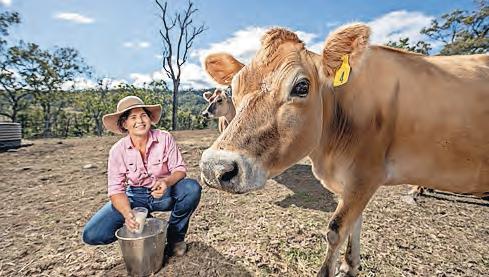
Instead, they mix innovative farm practices with old-fashioned passion and a genuine love of the land and their animals, to create a rural haven.

“The focus of everything we do and every experience we offer, is our dairy, our farm and our desire to build a farm business that can be taken on by our children, and their children on this beautiful property that’s been farmed by Dave’s family since 1874,” Kay said, who now sits on the boards of eastAUSmilk and the Queensland Farmers Federation.
“We’ve gone from a dairy farm being propped up by tourism dollars, to a dairy farm leveraging the benefits of agritourism to add higher value to our farm product and now we have a legacy for future generations.”
Kay and Dave made the bold decision to leave milk processor Norco in January 2021 after establishing their own Tommerup’s Jersey Girl line of boutique dairy products in 2019. They had been supplying Norco since 1984, when the company took over the former
Logan
“Like so many others, our journey into agritourism came as a survival tactic for the farm,” Kay said.
“With three generations living on the family property, and Dave and I having just started our own family, dairy deregulation in 2000 came at us like a freight train.
“The dairy should have closed — the numbers told us so. But numbers can’t beat passion, or respect for family and tradition.
“Five generations have milked cows on our beautiful farm, every single day in the same dairy for over 100 years.
“For Dave, giving up that tradition wasn’t an option, no matter what the numbers said. Dairy farming is not his job, it’s who he is, and it’s who our family is.
“Luckily, farmers are masters of taking something they have and moulding it into something they need.
“There are few things that can’t be fixed with a bit of baling twine or fencing wire. Fixing this problem, however, was going to take more than twine.”
Dave said change wasn’t easy for him.
“There are so many family traditions linked to everything I do. Leaving Norco was a difficult decision, but it was the right one,” he said.
“Most farmers are highly innovative, they have to be to survive. It’s a matter of whether they have the financial resources, knowledge and confidence to get where they want to be.”
Six long years after deregulation, Dave and Kay took over the family farm. It was at rock bottom.
“All savings were gone; the maintenance and capital investment had been non-existent since deregulation,” Kay said.
“We not only had to find a new income stream to combat the ridiculously low milk prices, we had to rebuild.
“I wasn’t born in the region, so had relatively new eyes and could see the beauty and uniqueness of life on our farm, often taken for granted by those who’ve only known this life.
“For many farmers, the idea that their daily life could be interesting to visitors is ... quite a stretch.
“When your confidence is diminished from years of being ‘just a farmer’ and at the bottom of the supply chain, it’s hard to realise that what you do has worth to others.”
In 2008, Kay and Dave opened the farm to a little camping, animal feeding tours and school excursions.
“Scenic Rim Regional Council saw potential in our ideas and we joined their business development program.

“Our teacher was none other than the godmother of agritourism herself, Rose Wright. This changed our lives.”
Now Tommerup’s Dairy Farm has key strategic pillars — the dairy, farm stays, meat sales and farm experiences — and they are passionate and highly focused about the future.
Their farm stay includes The Cottage and The Homestead, both built in 1888 and steeped in family history. They are both booked well into the future with cancellations snapped up within hours.
“In the eyes of our guests, our farm is their farm; it’s a genuine place to connect with the land and the farmers, to with where their food comes from, and to make lifelong memories,” Kay said.
School group excursions are a particular passion of Kay’s.
“We’re creating a connection that will shape their future opinions and consumer choices.
“And perhaps, they might just see something that draws them to a career in agriculture — bringing a new generation of enthusiastic, passionate people to our industry.”
During the recent drought, when another round of dairies shut down, Kay and Dave dug in, dropped their herd numbers to focus on quality, and launched their Jersey Girl brand.

As Kay speaks about the milk, cream, butter, milk-fed pork and rose veal they produce, her eyes light up even more.
Because as a micro-dairy, they shouldn’t be surviving — but because of their passion, and support from chefs and customers, they are.
“We now process all of our own milk and cream within a micro, on-farm creamery — an investment funded by the success of our farm tourism,” Kay said.
“We separate the cream in our century-old dairy with an Alfa Laval separator of the same vintage.
“The skim milk is fed to our pigs, and the
cream is processed into our award-winning artisan dairy products, including our handmade cultured butter and the long-awaited Farmer Dave’s cream top Jersey milk.
“Every part of the process is done by us, here. Our products are boutique, extraordinary, and command a premium price.”
There’s no wastage on the farm, and the animals are rotated around the farm to have a positive impact on the land.
“Whilst we do have a farm gate, most of our dairy, pork and veal products are supplied to high-end restaurants in Brisbane,” Kay said.
“These chefs have become part of our family. They know us, our farm and our ethics intimately. Our farm, our story and our produce is respected and showcased across their menus.
“It’s really important that we encourage other farmers who might be thinking, ‘we can’t keep doing this’, that we let them know there are other ways to do it.
“When a higher value is placed on products coming from farmers choosing a regenerative journey, it allows more resources to be allocated to those regenerative practices and helps us to continue down that path.
“The whole story — from raising calves right through to working with chefs, schools, visionaries and the organisations creating policy for the future — means our role is more than producing products that taste great.
“We are moving the dial for the future.”
And then Dave said something that makes the penny drop.
“Without diversification, we wouldn’t have a legacy to pass on to our kids,” he said.
Most of their dairy, pork and veal products are supplied to high-end restaurants in Brisbane. Kay and Dave Tommerup recently won the Australian Farmer of the Year Awards Innovation category.“They now want to be a part of our business, and the sense of pride this gives me is indescribable.

“I know the history, the stories, the passion, the bloodlines and the farming craft will live on. The life will continue.”
Back to the 20 Jersey cows.
They all have names — Martina, Brenda, Susie, Tali, Ruby, Sugarloaf, Friday, Rose, Muriel, Margie and more. And yes, they come when called.
So do the veal calves who are named after chefs.
There’s Gordon Ramsay (so named because of his strong personality), Jamie Oliver (he was a sweetie), Guy Grossi (it was the dark rim around his eyes that decided his name — those glasses), Shannon Bennett (he had little white socks that reminded Kay of the sneakers Shannon wore on MasterChef) and Maggie Beer (there’s been two of her so far).
Local chefs star, of course — including Daniel Groenberg, who headed the kitchens at Kooroomba and is now at the newly re-opened Roadvale Hotel; Simon Furley, who is at The Paddock at Beechmont Estate; and Wild Canary’s Glen Barratt — all champions of local produce.
Agriculture or tourism?
“It shouldn’t be a choice,” Kay said.
“I’ve long felt that as agritourism operators we float along almost in no man’s land — not fitting comfortably into mainstream tourism, and not sitting neatly in agriculture either.”
She said it was music to her ears that a national agritourism strategy is being launched.
“I’m very fortunate to live in a region that has embraced agritourism.
“Scenic Rim Eat Local Week, over the past decade, has lifted the profile and the confidence of so many farmers and producers in our region, and been the catalyst for countless ventures into this industry.


“Eat Local Week brings 40,000 visitors to our region, over $3 million worth of publicity, and injects $2 million into the economy.
“On our own farm that equates to almost 3000 visitors and incredible product sales.
“As a region we support, encourage and celebrate collaboration. We’re not competitors, we’re in this together.
“As an industry, we need recognition from all levels of government that agritourism is farm diversification.
“It’s farmers using their resources and skills to build resilience in the face of a changing landscape — environmental, climatic, social and financial.
“It’s not a shift away from agriculture, rather a move to create a farm business that can withstand the challenges of the future.
“Currently, to grow our agritourism business, we are forced to choose between farming and tourism.
“Agritourism isn’t a change of use, it’s a change of mindset. It’s a change in the way we promote and value our industry, our farm product and produce, and it’s time it was recognised that way.
“For independent farmers to keep farming land for agricultural use, change is needed from all levels of government working together to
achieve a set of guidelines that allow farmers the right to farm and to build a connection with their customers right there on the farm
“Farmers must have a seat at the table for those discussions to create a meaningful reform process.
“We live this, we know what we need to take our businesses to the next level, to keep farmers farming.
“There are farmers with agritourism businesses across Australia waiting to hit the go button, to expand their offering but they are drowning under overbearing outdated regulatory frameworks that don’t recognise the needs of agriculture in a modern society.”
Kay said the Scenic Rim had become an incubator for farmers wanting to diversify into value-added farm businesses.
“The culture within the region, supported heavily by the Economic Development and Tourism team, encourages farmers moving in this direction and provides platforms such as Eat Local Month.
“The camaraderie between producers fosters innovation, collaboration, a sense of pride amongst our community. Let us keep moving forward.
“We now need recognition, at local and state level, that the current land use planning framework must be reviewed and refreshed to allow farmers to diversify and add value to their core farm business, without the need for a material change of use.


“Farmers moving into agritourism is a change of mindset, not a change of use.”
During
the recent drought, when another round of dairies shut down, Kay and Dave dug in, dropped their herd numbers to focus on quality, and launched their Jersey Girl brand.THE GIPPSDAIRY Muster will be held on Wednesday, June 7 at the Regent Theatre in Yarram, South Gippsland.
The theme of the 2023 GippsDairy Muster is ‘Our people in dairy – Rethink, develop, grow’. This free event will include a line-up of engaging, informative speakers that will provide relevant and practical content on all things related to workforce and development.

This year’s event aims to provide insight into ways to attract, manage and retain a strong workforce on your farm and in the wider dairy industry. The program will cover topics relevant to all industry workers, at any career stage. For students, employees and those looking
to enter the dairy industry, there will be information and support on how to set goals, determine career pathways and further develop skills.
The event will include an introduction from keynote speaker, Humans of Agriculture Founder Oli Le Lievre, and a panel discussion of Australian farmers facilitated by Matt Harms.
There is also a choice of three breakout sessions run by people and culture strategist Sally Murfet, leadership and culture development expert Kylie Paatsch, and leadership and communications consultant James Freemantle.
These breakout sessions will cover goal setting, communicating effectively and adaptive leadership.
The event will run from 9.30am to 3pm and will be followed by an optional networking dinner at the Yarram Football Club from 6.30pm.
During the dinner, keynote speaker Sally Murfet will discuss communication, culture, connection and conduct. She will also provide further context about why building capability and capacity in people is so important in the current operating environment.
To register for the 2023 GippsDairy Muster, visit: dairyaustralia.com.au/gippsdairymuster
The Federal Government is being urged to make importers pay a container levy to boost biosecurity efforts.
NSW Farmers said it would revive the campaign for an Onshore Biosecurity Levy — ditched by the previous Federal Government — which would see importers shoulder their share of the biosecurity burden.
“There’s no second chances when it comes to biosecurity,” NSW Farmers biosecurity chair Ian McColl said.
“A single, widespread disease outbreak
could cause billions of dollars in economic loss, not to mention extensive damage to our agricultural and native plants and animals.
“We need to strengthen our borders against threats, and we need to ensure state and federal departments and authorities are properly resourced to prevent — and respond if need be — to pest and disease outbreaks.”
It came after federal police and biosecurity officials seized 38 tonnes of illegally imported turtle meat, frog meat, plant
products, avian meat, pig meat, beef meat and raw prawns that could potentially harbour several devastating diseases.
With NSW the destination for half of all imports, Mr McColl said more needed to be done to keep the state safe from illegal black-market material while securing access to export markets.
“We welcome the NSW agriculture minister’s commitment to biosecurity, but it’s clear there needs to be a dramatic increase in resources at a state and federal level to inspect incoming freight and
parcels,” Mr McColl said.
“We support the concept of biosecurity as a shared responsibility — those who create biosecurity risks should invest in prevention and management of those risks — and we believe a ‘container levy’ is a simple way to help fund these increased efforts.
“A container levy is one of the most effective and sustainable ways of fostering a strong biosecurity system, as it requires the user who creates a risk to pay for it, and means funding isn’t at the whim of the government of the day.”








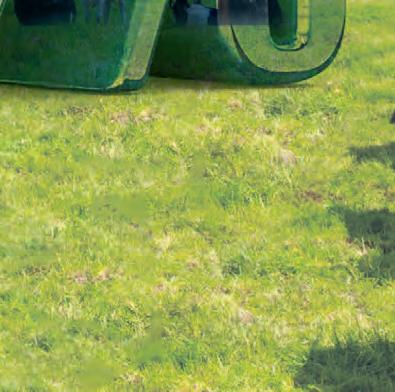









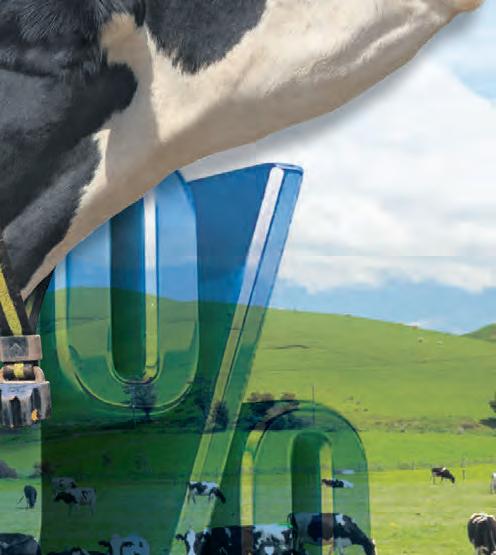


HE’S THE $10,000 Holstein calf who has become a star, in the media and at Farm World.

PROMOTE PRODUCTIVTY REDUCE PATHOGENIC BACTERIAL LOAD IMPROVE HEALTH
What if you could proactively improve calf and cow health sothey can better withstandchallenges, including those caused by mycotoxins?
What if you could control calf diarrhea before an outbreak, and reduce the incidence, severity and duration of other common diseases that affectthe feedconversion efficiency of lactating cows and your bottom line?

What if you could add nutritional insurance to every stage of your cattle’s lives resulting in healthier heifer calves that join the milkingherd ready to contribute at a high level, and lactating cows that spend less time off feed.
Named ‘Happy’, the bull calf was born with an emoji happy face on his side.
A simple social media post by dairy farmer Megan Coster from Ripplebrook, has seen Happy become the interest of global media and many attendees at Farm World, the annual machinery field days held at Lardner Park.
Happy was 15 days old on the first day of Farm World on Friday, March 24.
At the end of the day, despite a full day of attention, he was placid and content.
Lardner Park chief executive officer Craig Debnam, is pictured with Happy, and the “cheque” in the background indicating the 10,000 reasons why the calf will grow up and grow old as the mascot of
And Craig said Happy would probably
“Seven days out from Farm World and Neil Darby (a Lardner Park board member) suggested Happy would be a good mascot for Farm World,” Craig said.

“Our board executive decided to buy him.
“Then it was a matter of coming to an agreement with Barry and Megan Coster about how much to pay for Happy.”
Barry and Megan suggested an amount that could be donated to the nearby hospital, at Warragul. The donation made, Happy was installed at Lardner Park in the cattle shed, and settled into his new home.
“Happy is now the mascot of Farm World, and he’ll live out his years on 300 acres of good grazing land,” Craig said.
“Generations of children will get to enjoy seeing him every year at Farm World.”
As well as adlib water and calf feed, Happy is in a pen with clean bedding and receives milk twice a day, as he would if he was being raised on a dairy farm. He also receives a lot of attention from Lardner Park workers.
Happy also receives a lot of bovine attention — the Lardner Park grass-fed steer trial guarantees a large number of cattle are within his vicinity throughout the year.
In early April, Happy got two new paddock buddies, Eddie and Alan.
Eddie is a Speckle Park-Friesian calf, and Alan is an Angus-Friesian calf. Both were born in Cloverlea at Solney British Friesians.
Eddie and Alan were donated by Lardner Park board member, Eddie Jefford.
More on Farm World, pages 36-38.

•Agglutinates and binds E. coli and Salmonella enterica.
Has been shown to:
•Reduces the incidence, severity and duration of mastitis and cryptosporidiosis infection.

• Agglutinate and bind E. coli and Salmonella enterica.
• Reduce the incidence, severity and duration of mastitis and cryptosporidiosis infection

•Reduces blood stress markers during and after transport and temperature stress.
• Reduce blood stress markers during and after transport and temperature stress
•Minimises cytotoxic damage caused by a variety of mycotoxins and carryover of aflatoxins in milk.
• Minimise cytotoxic damage caused by a variety of mycotoxins and carryover of aflatoxins in milk
• Improve weight gains and performance in calves and milk yields in lactating cows



•Improves weight gains and performance in calves and milk yields in lactating cows.
Distributed By:

 BY JEANETTE SEVERS
BY JEANETTE SEVERS


THE ANNUAL women in agriculture lunch at Farm World on Friday, March 24 was well attended.
The long-standing patron of the women in agriculture lunch is farmer and agribusiness woman Angela Betheras, who began the event when she was chairperson of Lardner Park. Lardner Park is where the Farm World field days are held.




Attendees at this year’s lunch heard from two guest speakers — ABC Landline journalist Pip Courtney and Angus commercial cattle and rare breeds pig farmer Katy Brown. ɋ More from Farm World, page 36


 Corinna Davey from UniPak and dairy farmer Julie Moss from Toora.
Jan Best from Foster and Wendy Whelan from Toora.
With Commonwealth Bank’s Allison Seeley and Sharon Green were Kaye Nelson-Hill and Lauren Walker, both from Nar Nar Goon.
Dawn Harper and Julie Goodwin from Warragul with Polly Winterton from Bona Vista.
Julie Bowden and Tabatha Cook from the Victorian Aboriginal Childcare Agency attended the women in agriculture lunch.
Monique Lelliott, Bianca Brown, Sarah Ralph, Sharon Morton, Laura Williams, Hayley Stivey and Iris He, all from Warragul, attended the lunch.
Lardner Park board deputy chair Angela Bayley, lunch speaker Katy Brown, Lardner Park chief executive officer Craig Debnam, lunch speaker Pip Courtney and patron Angela Betheras at the lunch.
Corinna Davey from UniPak and dairy farmer Julie Moss from Toora.
Jan Best from Foster and Wendy Whelan from Toora.
With Commonwealth Bank’s Allison Seeley and Sharon Green were Kaye Nelson-Hill and Lauren Walker, both from Nar Nar Goon.
Dawn Harper and Julie Goodwin from Warragul with Polly Winterton from Bona Vista.
Julie Bowden and Tabatha Cook from the Victorian Aboriginal Childcare Agency attended the women in agriculture lunch.
Monique Lelliott, Bianca Brown, Sarah Ralph, Sharon Morton, Laura Williams, Hayley Stivey and Iris He, all from Warragul, attended the lunch.
Lardner Park board deputy chair Angela Bayley, lunch speaker Katy Brown, Lardner Park chief executive officer Craig Debnam, lunch speaker Pip Courtney and patron Angela Betheras at the lunch.
DAIRY AUSTRALIA has recently expanded its popular Forage Value Index tables for the 2023 rye-grass sowing season to assist farmers in making better choices when choosing rye-grass cultivars which could mean as much as $250 per hectare per year of increased net profit.
Australian dairy farmers invest significant amounts of money annually on renovation of rye-grass pastures to grow feed for their herds.
According to the Australian Seed Federation, in 2021 about 11 per cent (one billion litres) of Australia’s total milk production came directly from newly sown pastures.
To ensure farmers are getting the best value for their money when choosing rye-grass cultivars, Dairy Australia annually produces its innovative FVI.
The FVI is a tool for farmers and producers which independently ranks varieties of ryegrass according to their potential contribution to overall farm profit.
Initially released in 2017 by Dairy Australia for perennial rye-grass following similar initiatives in Ireland and New Zealand, the FVI has been updated each year since as new varietal trial results became available, as well as being expanded to include annual and Italian rye-grass.
The FVI uses the latest research to provide farmers and advisors with an easy, accurate and independent assessment of the potential economic value of perennial, annual and Italian rye-grass cultivars under Australian conditions.
The FVI rating system helps farmers and advisors make more informed decisions when selecting rye-grass cultivars to help farmers increase pasture productivity at key times of the year and ultimately improve farm profitability.
The data used to create the FVI is sourced from the Pasture Trial Network — a collaboration of seed companies, Meat and Livestock Australia and Dairy Australia, which conducts independent trials across the country.
The FVI ratings system is based on similar best practice and was developed in close consultation with farmers, the seed industry and fully-qualified internationally recognised experts.












Across all dairying regions of Australia, farmers and their advisors are currently making decisions about which rye-grass cultivars to plant.
The vast majority of Australian dairy farmers will sow either annual, perennial or Italian rye-grass on their farm this year and with a difference of over $250/ha/year of net profit predicted in the FVI between the highest and lowest yielding cultivars.
“It’s of utmost importance for farmers to select varieties which have the best chance of being profitable,” Dairy Australia FVI lead Ruairi McDonnell said.
“There are many rye-grass cultivars to choose from, but Dairy Australia’s FVI tables provide farmers with independent assessments in an easy-to-use format to ensure they are making the right choices for their farm, in their region.”

Farmers can download the 2023 FVI tables now to plan their autumn pasture sowing at dairyaustralia.com.au/fvi










The detailed Pasture Trial Network results from across a broad range of Australiandairy regions are also available on the MLA website for farmers to consider those results in any seed purchasing decisions.
Power Systems Australia are the Australian AKSA distributor for a large range of Diesel, Gas & Hybrid generators for stand-by and prime applications. No matter what style or size of generator you are looking for, Power Systems Australia are your Generator specialists.


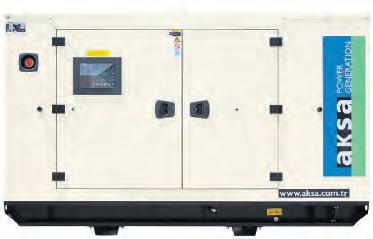
















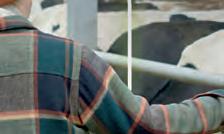





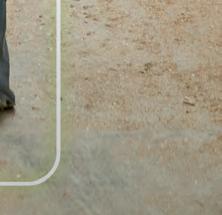























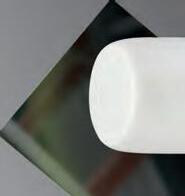

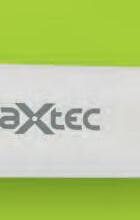

SIX MONTHS after floods devastated Rochester in northern Victoria, around half its residents face a winter living in sheds and caravans as they rebuild their homes.
A further 150 are still in a temporary accommodation village in nearby Elmore.
Former Campaspe Shire mayor and Rochester Community Recovery Committee chair Leigh Wilson said while community members pushed ahead with recovery efforts, things were different.
“You can just see it,” Mr Wilson said.
“People’s habits have changed. My habits have changed, I don’t do the things I would normally do.”
Roughly 1000 homes were inundated in October’s floods.
Two months before, Rochester was booming.
“We had new businesses going in and starting up, all the shops were full, housing was good and the farming sector was good,” MrWilson said.
“There was nothing really wrong.”
“Now this, it just rips it away from you ... just rips at the heart of the community.”
Mr Wilson wants continuity of government support for mental health and local services, and the town is lobbying to build a student hub for its Year 12 students, whose final school years have seen a pandemic, lockdowns, flood and the gutting of their family homes.
He is also hoping for more support for Campaspe Shire workers, who continue to navigate recovery efforts — including the repair of around 500 roads — on top of the more than
100 services the shire provides to its 17 towns.
Campaspe Shire Mayor Rob Amos lauded his colleagues’ work so far, but admitted the floods had taken a toll, with some still months from returning to their homes.
“People have been working very, very hard ... but people are getting a little bit tired and that’s why we hope for a little bit more support ... flood relief officers, temporary people to give us a hand,” he said.
Cr Amos said the council was grateful for the government assistance it had received, including a $1.5 million clean-up grant and $2.2 million for road repair, but continued to seek support.
He said he hoped to see more people stopping by after a lacklustre summer tourist season.
“If you’re driving through, particularly Rochester, but anywhere in the shire, to stop and grab a cup of coffee, grab a pie or a salad roll for lunch,” he said.
“It’s really appreciated and it really makes a difference.”
The Victorian Government said it continued to work with flood-affected communities in the aftermath, but the degree of future support wouldn’t be known before its budget was handed down in May.
“We’re in regular contact with community leaders of Rochester who have made their needs around housing, health and support services clear, and we’ll continue to help residents on their recovery journey,” a government spokeswoman.
For over 40 years Furphy Engineering have been leading suppliers of Tanks and Silos to on farm and Dairy Producers across Australia.


NOW AVAILABLE IN STOCK!
We have a brand new 33,000 litre and 40,500 Horizontal on farm milk tank in stock. Take advantage of 2021 prices on these two tanks.
These bulk milk storage tanks are made in Australia to suit our Australian environment and dairy standards.

Key features include:
• Furphy Engineering’s proprietary Dimple-Q, laser welded dimple plate which allows for efficient maintaining of the milk temperature.
• Polyurethane spray foam insulation applied prior to cladding to avoid insulation gaps for 100% effective cover.
• Top entry agitators to maintain milk homogeneity.
• Multiple internal spray balls for thorough cleaning inside the tank.
• Side manway access for safe entry into the tank.
• Fully welded stainless steel cladding.
• Calibrated site tube with a level indication strip or electronic sensor option.
• Large diameter design to reduce the required length and footprint in the dairy.
Custom Horizontal and Vertical tank options available from 20,000 litres to 100,000 litres.
Emergency Recovery Victoria chief executive Mariela Diaz said her agency also continued to work with flood-affected communities, including offering free structural assessments and finding temporary accommodation for the displaced.
“We remain committed to supporting recovery that is community-led,” Ms Diaz said.
“We will continue to support flood-impacted communities to recover from this extraordinarily tough event.”
Victorian Farmers Federation president Emma Germano said the agricultural sector suffered $5 billion in lost or damaged crops nationally due to weather events last spring.


“We’re talking about horrific incidences of mental pressure and mental health issues,” Ms Germano said.
“I’ve had a number of inquiries from farmers who have just not been able to get any assistance regarding the really massive infrastructure damage.”
She said farmers were concerned about further floods and some had banded together to progress the restoration of ageing levee banks.

“There is still high levels of water currently in storage, so the risk of flooding is very high,” Ms Germano said.
“We’ve actually got farmers who are now funding their own levee banks and trying to crowdfund amongst themselves ... because they’ve been told that the government won’t cover it.”
Campaspe Shire is also looking to future flood events, applying for a grant to buy
mobile, temporary levees through the federal disaster mitigation fund.

“The idea is that two people can deploy around about 100m in about 30 minutes,” Cr Amos said.

Back in Rochester, Mr Wilson is focused on returning the town to that moment, two months before the floods hit.
“To do that we need the surety of funding for mental health programs, for other wellbeing programs, sporting groups or for other clubs ... to help keep people attending so we can keep their wellbeing up,” he said.
As for mitigation, Mr Wilson said raising up houses and an early-release mechanism upstream at Lake Eppalock — currently the subject of a technical assessment — were key to the town’s future survival.
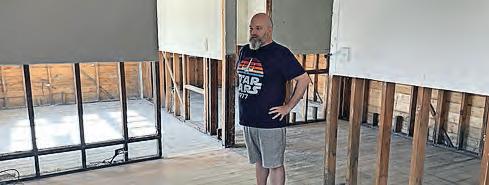
“This community cannot go through this again in their lifetime,“ he said.
“If we had something like this again, in 10 years’ time, just cross us off the map ... cross us off the map.”
Campaspe Shire is also looking to future flood events, applying for a grant to buy mobile, temporary levees through the federal disaster mitigation fund. Leigh Wilson in his childhood home in Rochester. Residents in the town face an uphill battle as they try to rebuild their town after record floods. Photo: AAP Image/Adrian Black
ELECTRIC TRACTORS, renewable diesel, bioenergy and solar-powered farms across Australia — that’s the vision for the future of agriculture being showcased at the National Renewables in Agriculture Conference 2023.
Keynote speaker will be economist and author Ross Garnaut. Other speakers include Michael Unwin, of Michael Unwin Wines, and dairy farmers Sandra and Wilcot Jefford.
The event, to be held on Wednesday, June 21 at Dubbo Regional Theatre and Convention Centre, will bring together farmers, agriculture




and energy consultants, peak bodies and government representatives to share stories of on-farm renewables, their business cases, and discuss what’s driving the transformation of energy use in agriculture.
Conference founder Karin Stark said there was still a way to go regarding the right technology to suit agriculture and having regional skilled businesses ready to help.
“Another important conversation we will be having is whether farmers can play a greater role in decarbonising the grid,” she said.
“This could mean more dispersed, smaller 5MW solar developments on hundreds of farms connecting to the distribution network, or it could mean farmers being paid for providing services to the grid as those markets slowly establish themselves.









“We are excited to welcome several farmers who will be sharing their knowledge of on-farm renewables at the conference, including dairy farmers running their irrigation off small scale wind and solar.

“There’s a tour to a solar grazing operation the following day to understand more about how Merino sheep are benefiting from shade and protection from solar panels.
“There’s a lot of interest from the agricultural sector in future vehicles and fuels, so we are delighted that Stephanie Gersekowski from John Deere will be joining a panel discussion about what we can expect from them in the coming years.”
To find out more or to register, visit: www.renewablesinagconference.com.au
Get snap-happy and capture the heart and soul of country Australia in photographs for the rural charity, Rural Aid.
The fourth annual Spirit of the Bush photography competition is now open, with the winning 12 photographs to be used in Rural Aid’s stunning 2024 calendar.
Rural Aid chief executive officer John Warlters said he was excited to see what the bush’s talented photographers had captured this year.
“The photographs that are submitted are always breathtakingly raw, real and reflect the highs and lows of life on the land,” Mr Warlters said.

“Last year, we received more than 1100 entries from across the country, making it very hard to whittle down to just 12 winners.
“I hope to see dozens of photos of successful crops, happy working dogs and fat cattle.









“On the flip side, the pictures of flooded creeks and empty paddocks tell a sobering, but equally important story.
“I’d encourage anyone with a love, and eye, for the bush to send their photos in.”
Photographers are encouraged to submit their photos to the themes of: Family, Community, Mates, Faces, Eyes, Tough, Golden Hour (sunrise/sunset) or All Things Rural.
Winners will be awarded a feature in the 2024 calendar, and a $250 pre-paid VISA card.
The competition closes on May 29.
To enter the competition, entrants must submit a high-resolution, landscape image via Instagram or Facebook, with the hashtag #SOTB2023 and tag @ruralaid in the picture, or upload their photo through the Woobox link: www. ruralaid.org.au/spirit-of-the-bush
Rural Aid’s 2024 calendar will be available for purchase later this year.
Proceeds will directly support Rural Aid’s range of programs that help farmers and their families.
Wilandra Farms’ owners Sandra Jefford and Wilco Droppert will tell their story at this year’s National Renewables in Agriculture Conference to be held in Dubbo.SAPUTO HAS announced it plans to sell two of its fresh milk processing facilities in Laverton North, Victoria, and Erskine Park, NSW, to supermarket Coles, a situation the dairy industry says needs to be watched closely.
The transaction is valued about $105 million and is subject to clearance from the Australian Competition and Consumer Commission and other customary closing conditions.
The deal is expected to be completed in the first half of 2024.
Saputo chair and chief executive officer Lino Saputo said the intended divestiture would help the processor streamline its operating model, strengthen market competitiveness, and allow it to reinvest in areas of the business that provided better value.

“We’re continually working to ensure we have the right manufacturing footprint and product offering to enhance our position as a high-quality, low-cost processor,” Mr Saputo said.
“This marks an important step in executing our long-term vision for success in Australia as we maintain a sharp focus on efficiency to ensure we maximise the return on every litre of milk.”
Each facility has the capacity to process around 225 million litres a year and they are currently mainly used to process Coles Own Brand two-litre and three-litre milk.
Coles chief executive officer Steven Cain said as well as improving security of its milk supply, the facilities had capacity for further growth opportunities through new product innovation.
“The acquisition will build on the strong relationships we have developed with our dairy farmers since launching our direct sourcing model in 2019,” Mr Cain said.
“Around 90 dairy farmers supply milk direct to Coles, allowing these farmers to invest for the future and ensuring the long-term sustainability of their farms.”
At the time, the company also announced it was investing $20 million to expand its Smithton (Tasmania) site and that its Cobram, Kiewa and Allansford facilities in Victoria were likely to benefit from further investment.
Saputo employees at both facilities will be offered employment contracts with Coles.
Coles said it would continue its direct sourcing model and relationships with existing dairy farmers, with no expected impact on current arrangements.

Dairy advocacy group eastAUSmilk said the farm gate price paid to dairy farmers must remain fair and transparent, with Coles now owning the equivalent of the dairy “paddock to plate“.
eastAUSmilk co-chief executive officer Shaughn Morgan said the ACCC must ensure there were no negative impacts upon the Australian dairy industry, especially given the declining milk production and farmers exiting the industry over the past years.
“We will closely monitor the ACCC review and the impact that the Coles purchase may have on the dairy industry,” he said.
The sale follows Saputo’s announcement late last year that it was selling its Maffra plant.
 Saputo
Dairy Australia plans to sell its Laverton North and Erskine Park facilities to Coles.
Photo: AP Photo/The Canadian Press, Ryan Remiorz
Saputo
Dairy Australia plans to sell its Laverton North and Erskine Park facilities to Coles.
Photo: AP Photo/The Canadian Press, Ryan Remiorz
The sale follows Saputo’s announcement late last year that it was selling its Ma ra plant.
GENETICS AUSTRALIA will enter into a new joint venture with global herd improvement leader URUS from July 1.
The new entity will continue to trade as Genetics Australia.
URUS is based in the United States and is a global leader in products and services for dairy and beef producers for artificial insemination, genetics, reproduction, and farm management systems, servicing more than 80 countries with brands such as GENEX, Alta Genetics, PEAK, VAS and Trans Ova among many others.

The joint venture will be 60 per cent owned by URUS and 40 per cent owned by GA.
It will have access to the full suite of GENEX products and access to the PEAK program.
Current GA chief executive officer Anthony Shelly will manage the joint venture.
The joint venture is subject to approval from GA members with a postal vote starting from April 3.
GA will hold meetings in coming weeks and provide other opportunities for members to ask questions and provide feedback.
Genetics Australia chair Trevor Henry said the joint venture would usher in an exciting new era in Australian herd improvement.
“Combining with URUS will provide Australian dairy and beef producers with access to market leading global genetics, technology and advice that simply could not be achieved by GA on its own; and GA will now have access to global markets for its Australian bred and sourced bull line-up,” Mr Henry said.


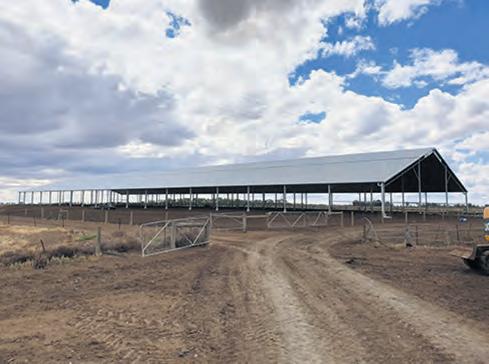
“This will assist in marketing Australian genetics to a global audience.”

Mr Henry said the GA board strongly recommended the transaction to members.
“We believe it provides the business with long-term sustainability and access to the best products and services in the world and will enable us to support the development and growth of our staff,” he said.
Mr Henry said GA had a strong position in the Australian market and was entering the joint venture from a position of strength, but the market was becoming increasingly
impacted by global trends that it had limited resources to pursue.
“Partnering with one of the large multinational market participants is key to establishing GA as a long-term sustainable locally-based genetics provider to Australian farmers,” Mr Henry said.

“This is genuinely a win-win and importantly there will be no change to the employees that customers work with, or the brands they see in the market which will remain as Genetics Australia and TLG.”
Mr Shelly said the joint venture would
benefit members, clients and staff and was a perfect fit for the co-operative.
“All of our negotiations with URUS have focused on how the JV partnership can deliver enhanced products and services to GA’s members and the broader market in Australia,” Mr Shelly said.
Mr Shelly said customers wouldn’t notice any major changes in the months ahead but over time would see an increased depth of products and more opportunities and support for international clients seeking Australian genetics.
URUS has undertaken similar transactions over recent years and chief executive officer Paul Hunt said Australia was an important market for the business.
“We have had experience here for many years and have looked at ways in which to further commit to the market,” Mr Hunt said.
“When GA approached us about a partnership, we quickly determined this to be a fantastic opportunity that needed exploration.
“We firmly believe that we produce the world’s leading genetics for the cattle industry and that this can have a significant positive impact for Australian farmers.
“Our PEAK division, which produces over 10,000 calves annually and supplies the highest quality genetic material to our business and will do so for the proposed JV going forward. When this is combined with the products sourced by GENEX, we feel that we will quickly be in a position to strongly support Australian farmers.”


ISAAC AND Angelique Korpershoek made a thorough assessment of the marketplace before choosing CowManager sensors to manage fertility and herd health.
Angelique is a vet and Isaac is a dairy fitter. Between them they had a solid background for making the right choice.
“Dollars are important,” Isaac said “But the CowManager ear tag system is easy to use. We can clip them on and off and reuse them when new animals come into the herd or older animals are culled.”

Isaac and Angelique took over the current farm, at Forest in north-West Tasmania, from Isaac’s parents 14 years ago, after having developed a succession plan.

Today they milk a commercial herd of 350 Friesians on 170 hectares.
Angelique works off-farm in a variety of roles and also does the book work, while Isaac manages the farm work with two full-time staff.
With four young children aged 11, 10, eight and six, they have found the CowManager system has given them greater freedom.


“We can go away with the family and we have this extra set of eyes on the herd to alert us if


there is a health issue with one of the cows,” Isaac said.

“It’s particularly good around heats and AI timing. The system auto drafts the cows that are ready; the AI tech turns up, and whether it’s five or 75 cows, they get the job done quickly.

“It’s a win-win”
Having installed the CowManager in November 2021, Isaac has calculated the system will pay for itself in two years, including the cost of the initial installation and the subscription.

In 2020-21 they had 85 empties after six weeks’ AI and two weeks with herd bulls.
In 2022 there were 71 empties after the same period.
“We got an extra 14 cows in calf with CowManager, which at $2000 each adds up to $28,000,” he said.
“We can trust the system. We couldn’t ever trust tail paint or scratchies completely.”

Before CowManager the Korpershoeks used patches. They were difficult to apply in winter; the cows’ coats were often wet and climbing rails wasn’t safe. But with CowManager it’s now less invasive and the process just flows.
Isaac also likes the subscription system available with CowManager.
If there’s a faulty sensor it is replaced
automatically. Upgrades are also automatic and budgeting is predictable.
“At $9000 a year, if we get four or five extra cows in calf, it’s paid its way. It’s a win-win. We’re more profitable and less stressed and we can take more time off.”





An added benefit of CowManager is the Health Module which alerts staff to cows that may be struggling — not eating, high temperature or other symptoms.
The module shows real-time cow data; staff can simply check their phones. The system helps them to learn how to pick up on a cow’s health and to observe the animals more closely.
“It’s given us the confidence to go away, to relax. You can have faith in the system and you can check back on your phone from wherever you are. We can go to Melbourne for the footy and know what is going on with the herd at home.”
The CowManager system gives the dairy farmer more information on each cow, which in turn increases their opportunities to provide the cows with better and more targeted care.
For Isaac, this new way of herd monitoring took some time getting used to.
“I was apprehensive at first because of the cost and the way we’ve done it for generations. For previous generations, it’s all been done by observation and being on site, so now we’re letting go some of that control and putting our faith in the product and the technology.”
Now Isaac feels confident in recommending CowManager for the ease of operation and the peace of mind in having an extra set of eyes monitoring the herd.
He and his family can be away from the farm and still be in control, knowing how each cow in the herd is travelling.
“We get more cows in calf and have a better understanding of their health, it’s definitely worth it.”

The latest DataGene results have revealed the top active bulls, herds and cows in the country. See some of the results below and on pages 28 and 29. For full results, visit www.datagene.com.au





At ABS, we believe that profitability and sustainability go hand-in-hand. That's why we've identified key traits like Polled, Mastitis Resistance, Health, Longevity, Daughter Fertility, Semen Fertility, and Production as crucial for the future of the Australian dairy herd.




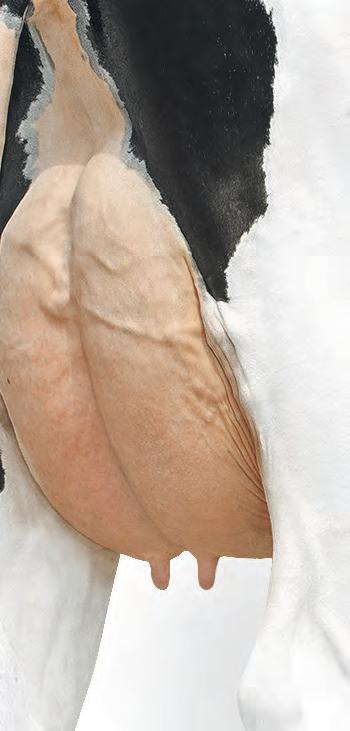

Our genetics are carefully designed to drive both profitability and sustainability in your operation, ensuring a brighter and more prosperous future for your farm.




GENOMIC TESTING and improvement are helping one Queensland dairy farmer reduce his annual herd replacement rate, cut heifer rearing costs and enhance the health of his animals.

Paul Roderick, his parents David and Gwen and staff members Steph Van Der Westen, Michael Sweetnam, Michael Turner alongside casual staff — vet students from the University of Queensland Gatton campus — milk from 220 to 370 cows year-round at Harrisville, an hour south-west of Brisbane.
The farm business started genomic testing six years ago as a tool to change subjective animal retention judgements into objective, scientifically backed farm business decisions.
But DNA testing has delivered much more than anyone had ever hoped.
It enabled the Roderick farm to use genetics to solve long-term challenges with dairy farming in Queensland such as cost and climate pressures.



“Our herd turnover rate is about a third a year and that has a lot to do with animal health, dealing with hot weather and wet summers,” Paul said.
“If we can breed a better cow, a more functional cow, using DataGene’s Balanced Performance Index and Health Weighted Index, we could see that reduce.
“Even if it came down by five per cent, it ensures we can rear better heifers while saving money as we don’t have to rear as many.”
Retaining 10 less heifers each year would save the Rodericks $20,000 — or $2000 a heifer — in rearing costs.

Saving rearing costs helps offset the cost of genomic testing for the Rodericks.

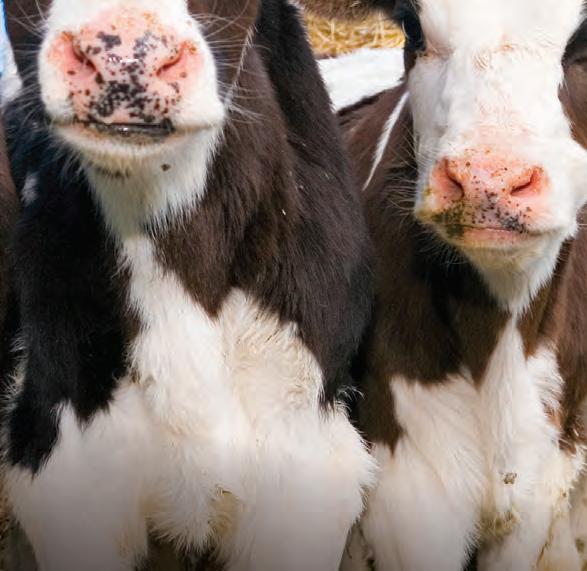
Testing 150 calves a year costs $7500.
They anticipate they’ll be testing less into the future thanks to more targeted use of sexed and beef semen.

Time-saving and better decision making also delivers a return on the investment in genomic testing, although it’s not as easy to measure, according to Paul.
“Quantifying something subjective into something that’s actually scientific and accurate is difficult, but it’s something that I value,” he said.
“For example, we now have data about our herd so when we get bull catalogues from semen companies we work from our data, not anyone’s opinion. It’s a way to avoid bias and it allows us to deal across companies and different bulls because it's scientific and index based.”
Using data for breeding decisions also helps Paul and his staff have clear and objective conversations about animal retention and the breeding strategy.
He said this ensured everyone was on the same page when it came to breeding and no matter who selects the bulls, it was going to meet their farm business requirements.
Steph manages the Roderick animals from when the calves are born until they enter the milking herd.
She said the heifers that were genomic tested last year and the milking herd would be joined this year according to their genomic results.
www.clarifide.com.au
We now have data about our herd so when we get bull catalogues from semen companies we work from our data, not anyone’s opinion. It’s a way to avoid bias and it allows us to deal across companies and di erent bulls because it's scienti c and index based.
This sexed semen and beef strategy would not only help phase out bobby calves, it is also set to improve genetic gain, according to Steph.
The strategy includes breeding the top 25 per cent, according to their genomics, twice to sexed semen, the middle 50 per cent once to sexed semen with the remainder to beef.
The portion of the herd bred to beef will be adjusted according to demand for dairy heifers, Steph said.
For her, reducing the number of heifers reared as replacements for the dairy business saves time and money, but it also enables the redirection of funds.
“If we aren’t keeping as many heifers and not as many are being bred, we have the option of not having to buy so many dairy semen straws,” Steph said.
“This means we can invest more money into better bulls — better genetics — to breed the ones we are retaining.”
Part of Steph’s job includes genomic testing the calves when they are sedated for disbudding.
She said taking an ear notch sample was a simple process, while analysing the data has required extra learning.
“With genetics in general there’s a lot to get your head around,” she said.
“That’s why field days and information sessions have been great.”

Steph and the team at the Roderick farm use DataGene’s DataVat herd software for management and the genomics software from their service provider to interpret the DNA results.
In the same way artificial insemination became a “game-changer” on-farm for his father David’s generation, Paul’s confident genomics will do the same for modern dairy farmers.
With trust in the science, he’s viewing it as a long-term investment for his own business and the entire Australian dairy industry.
“There’s been a significant amount of dairy farmer levy money put through genomics and this has also been done independently with world leading scientists in the field,” Paul said.
“Now, the practical application we’ve seen in the past five or six years is justifying this investment.”
For his own business, Paul anticipates the role of genomics in decision making and breeding direction will only increase as more data becomes available.
He’s especially interested in DataGene’s work around breeding for heat-tolerant cows and further investigating the Sustainability Index as a tool to reduce emissions intensity.
The Roderick farm has already adjusted its calving pattern to avoid the hotter months.

Cows mostly calve from March through to October, but Paul believes breeding for heat-tolerant animals will further assist them in managing fluctuating weather conditions.
“We are trying to use genetics on our journey to give us a hand with the challenges we face as dairy farmers in Queensland,” he said.
“The early indications are that it is working. We are breeding better young animals.
“Genomics is part of our tool kit. It isn’t everything, we still must get cows in calf, feed them well and everything else, but it is part of our puzzle.”
Australian dairy farmers can also now accurately record the beef genetics they use within their dairy breeding program, thanks to the addition of 200 beef bulls to the National AI Sire Identification System. Vital for tracking the parentage of dairybeef calves, it’s now possible to record the exact beef bull used to breed each dairy cow or heifer.
Previously, beef genetics were viewed as a homogenous commodity within many dairy herd software programs.



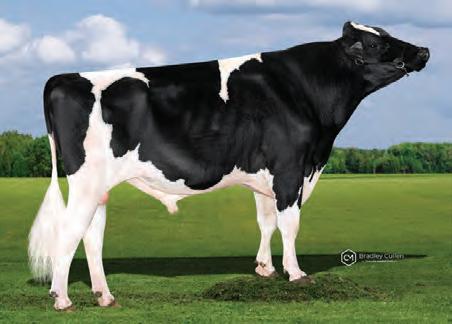
DataGene extension officer Peter Williams said this change was a boost for traceability and laid the groundwork for dairy farmers to value-add their dairy-beef operations.

“Accurate genetic identification is the first step towards delivering more value to the dairy farmers who participate in the beef market,” Mr Williams said.
“It will link their product back to the farm and has the potential to increase the return on the investment in beef genetics by delivering a quality repeatable product.”
Australian dairy farmers can also now accurately record the beef genetics they use within their dairy breeding program.Gippsland dairy farmer Tom Kent is looking forward to using DataGene’s new Within Herd Ranking Tool to compare the performance of animals in his mixed-breed herd, regardless of breed.
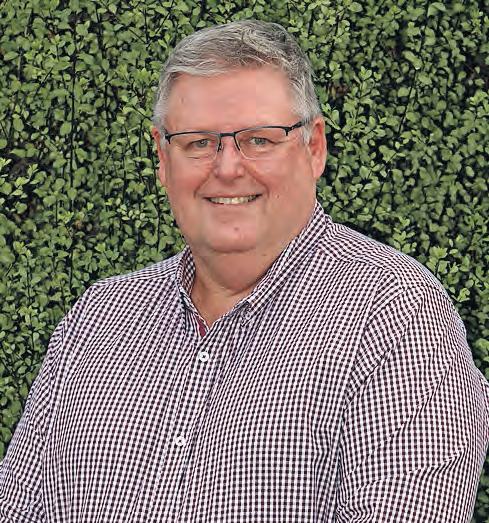


DAIRY FARMERS can now compare a Jersey with a Holstein, Aussie Red with a crossbred, or any other combinations of these breeds.












A first for the Australian dairy industry, the Within Herd Ranking Tool enables dairy farmers to compare the genetic potential of animals of different breeds, across a variety of traits and industry indexes within their own herd.
It ranks all animals in the herd, regardless of breed in a single list.






DataGene stakeholder relations specialist Peter Thurn said this tool was something the industry wanted as it ensured all farmers can use their herd data to make heifer selection, culling, breeding and other management decisions for all their animals.

“The Within Herd Ranking Tool takes a herd’s Australian Breeding Values and converts them to a ranking that’s unique to that herd — similar to how the Production Index is generated using herd recording information,” he said.
“Cows and heifers can be compared across DataGene’s three indexes — the Balanced Performance Index, Health Weighted Index and Sustainability Index — and for traits such as production, somatic cell count, mastitis resistance, temperament, feed saved, fertility, overall type and many more.”

The Within Herd Ranking Tool ranks all animals in the herd, regardless of breed, in a single list.
Tom Kent milks a mixed breed herd in Gippsland.
He said removing the breed influence on his genomic breeding values would help him develop a more efficient herd.
“In the past it has been hard to objectively evaluate how our cross-breeding program has been performing,” Tom said.






“The new Within Herd Ranking Tool will help us assess our cows more accurately regardless of what breed they are.”
The Within Herd Ranking Tool is available through DataVat.



ABS AUSTRALIA has six of the top 10 proven Holstein bulls, including the top four sires in the country, in the latest Australian Breeding Values.
Dominating the proven Holstein bull rankings is proof that these sires are “gold standard” according to ABS Australia’s Bruce Ronalds.
“There are only 34 proven bulls — those that have demonstrated their value to dairy farmers across the country — in Australia,” Mr Ronalds said.
“But there are up to 889 genomic bulls available.
“For one bull — let alone the team offered by ABS Australia at the moment — to move so successfully from the genomic list on to the proven list demonstrates the depth of these genetics and the advantage they offer the Australian dairy industry.”
Persuade is the nation’s highest-ranked proven Holstein with a Balanced Performance Index of 549.
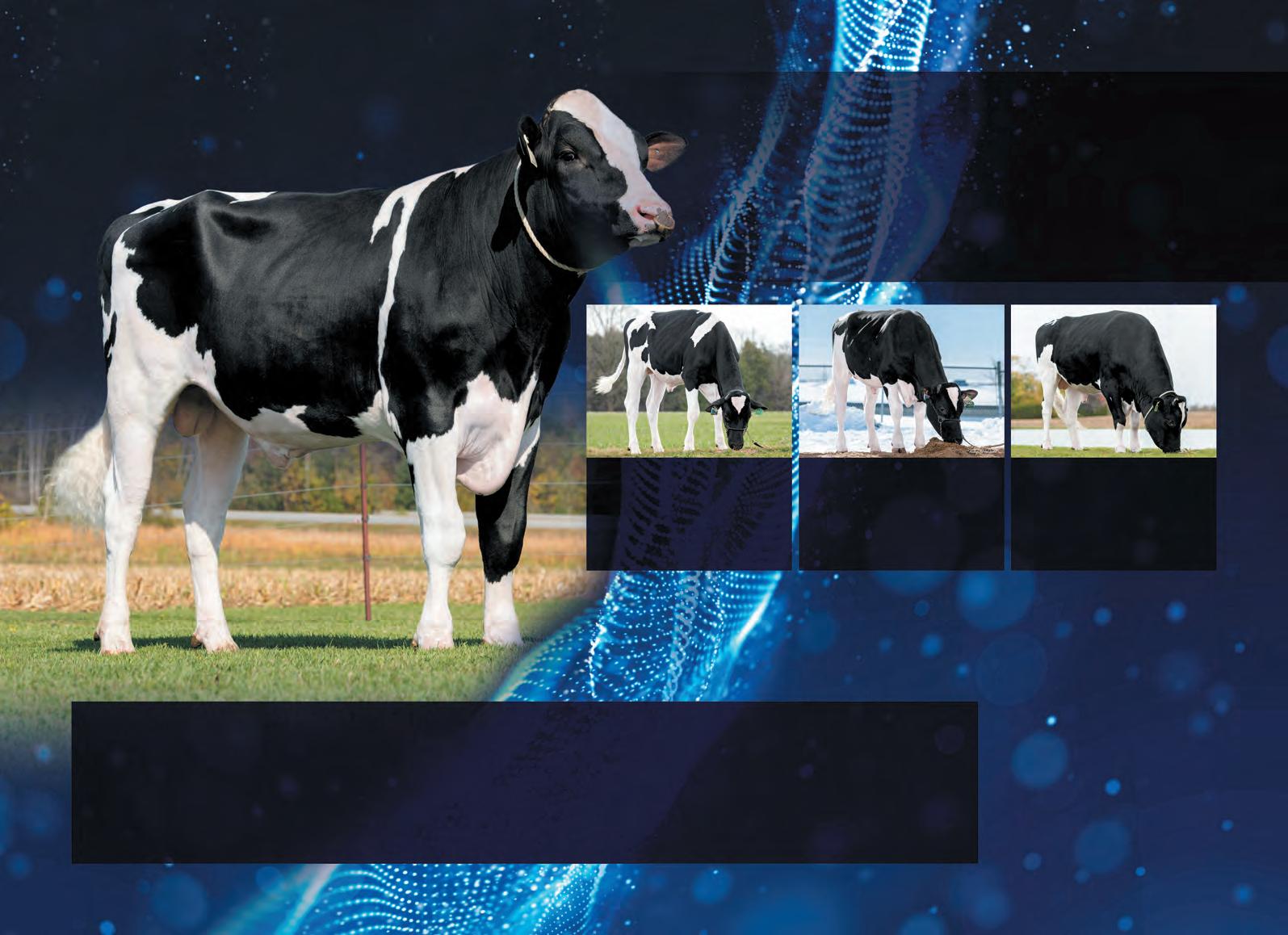
“Persuade is the second sire that ABS has graduated from the top of the genomic list to the top of the proven chart,” Mr Ronalds said.
“The first was ABS Jeronimo P — an absolute freak of a bull — who now sits at number three.”
Denovo 14744 Ginetta is second on the Holstein proven list.
World-renowned sire of sons and breed-leading fertility bull DG Charley continues his run near the top of the ABV rankings, sitting at number four with 478 BPI.
But it’s the history-making Rubels Red that has had the industry talking, Mr Ronalds said.
The highest-ranking Red Holstein ever on the Australian proven index, he’s also the number one type sire in the breed.
“Holstein breeders can use Rubels Red regardless of whether they are chasing Red or not,” Mr Ronalds said.
“Breeders have used him because he’s a Holstein that ranks well.”
Northern Victorian breeder Adam Dee of Clydevale Holsteins used Rubels Red a few years ago, initially interested in the Holstein’s outcross pedigree.
But it was his “all round” proof that cemented his place in the Clydevale herd.
“There are no major holes (in his proof) you have to worry about, he is a pretty easy bull to use” Mr Dee said.
ABS Australia also has the highest BPI “double P” bull ever — Denovo 4798 Estate PP.
Dairy farmers can also expect more choice of quality polled sires than ever before.
“When the ABS team went through and selected the sires that we knew Australian dairy farmers would like — those with balanced type, teat length, positive health traits that were also double-P — we got to 11,” Mr Ronalds said.
“That’s 11 quality, double-P Holsteins available for the Australian market out of a total global pipeline of more than 40 polled sires.”
ABS Australia has also seen huge demand for its new St Jacobs’ ‘Linear Choice’ branded semen.
Since its launch at International Dairy Week in January, Mr Ronalds said dairy farmers and breeding advisors had jumped at the opportunity to use sires that excel with production, health and linear traits.

Jersey options stack up
New Jersey bull Ranleigh Lava is injecting crucial chest width, positive milk, and components into the Australian Jersey herd.
Bred in Gippsland by the Boyd family, Lava is 353 BPI and boasts great cell count and mastitis resistance traits.
After launching to huge demand in spring, Gippsland-bred Balnageith Jango is the number two ranked polled genomic Jersey in Australia and seven on the Sustainability Index.
ABS Australia has secured access to semen from the son of world-renowned elite sire Storflor.
Skoien, sired by Storflor, is 200 BPI on the industry’s genomic list and has outstanding udder health, daughter fertility, extreme calving ease and short gestation.
“He’s also got good milking speed and temperament. He really is the complete package,” Mr Ronalds said.
He said this came after ABS Australia continued to dominate the Red dairy sire market with five of the six ‘double -P’ Red sires in the DataGene Good Bulls Guide and eight of the top nine Daughter Fertility Red sires.
It’s the fifth ABV run where ABS Australia has owned eight of the top nine Red daughter fertility sires.
The second highest genomic ABV Red Finsland-P is 331 BPI, second on the Health Weighted Index and top of the Sustainability Index.
New to the ABV proven list, Norwegian Red sire Roen sits at number six for BPI and is the second highest ranked Red sire on the HWI.
Roen is available in conventional and sexed genetic product REDX.
AS WE approach a change in season, it is time to think about the burden of internal parasites in weaned stock. This article discusses the common gastrointestinal worms and how they can affect dairy heifers.
Common gastrointestinal worms
Gastrointestinal worms are parasites that live and breed in the gut of cattle.
They are divided into nematodes (round worms), cestodes (tapeworms) and trematodes (flukes) and are assigned to one of these groups according to their structure.
Worms in the same group tend to have similar life cycles. The nematodes are the most economically important internal parasite of cattle. Tapeworms play a minor role and flukes can cause significant economic losses in some geographic areas.
The small brown stomach worm, Ostertagia ostertagi, penetrates the lining of the abomasum (fourth stomach) causing severe damage and inflammation.
Infected heifers can be anaemic, have scours, are off their feed and lose weight. Cattle up to 18 months old can be affected.
This parasite can enter an ‘arrested phase’ of its life cycle which can then resume three to nine months later. This type of disease can cause significant losses in young heifers as the
worm larvae emerge.
The barbers pole worm, Haemonchus placei, thrives in northern NSW and Queensland where there is summer rainfall. This blood sucking parasite also lives in the abomasum and causes severe anaemia and loss of protein. This results in the characteristic ‘bottle jaw’ appearance with affected cattle being weak and slow to move.
The stomach hair worm, Trichostrongylus axei, is the last of the common abomasal round worms. It also damages the lining of the abomasum causing inflammation and reduced absorption of nutrients. The stomach hair worm is often diagnosed in mixed worm burdens and exacerbates the severity of an infection.
The main species of small intestinal worm affecting cattle is Cooperia spp. These worms are often present in mixed infestations. Affected animals will have diarrhoea, poor weight gain and lack of appetite.
Trematodes (flukes)
Both the liver fluke, Fasciola hepatica, and the stomach fluke, paramphistomes, require a particular type of aquatic snail to complete their complex life cycle. For this reason cattle become infected in only certain regions of Australia where these snails exist.
Liver fluke infection results in significant liver damage which causes irreversible scarring. Signs of liver fluke include poor appetite, weight loss, ‘bottle jaw’, anaemia, jaundice and death. Contact your veterinarian to find out if liver fluke is present in your area.
Designed for Dairy Farmers.
Delivered by Dairy Vets.
ProDairy can assist you with the development of a tailored plan:
• On-farm visit by a ProDairy veterinarian.
• Review of the current biosecurity principles, the major risks and actions taken to reduce those risks.
• Development of a customised biosecurity plan. Visit prodairy.com.au for more information.


These worms are long and segmented, measuring up to 6 metres in length. They commonly live in the small intestine but do not usually have any adverse effect on the animal.
Heavy worm burdens may compete for nutrients and lead to poor weight gain. The main concern with tapeworms in cattle is from a human health perspective as cattle can be an intermediate host in the life cycle of the human tapeworm, Taenia saginata.
This is not commonly diagnosed in humans but remains an important zoonotic disease across the world.
The signs of gastrointestinal worm burdens include weight loss, ill-thrift, diarrhoea and dehydration. Research has shown that even
low-level infections can have a negative effect on productivity in dairy replacement heifers.
These heifers may not show overt clinical signs and thus are described as having ‘subclinical’ infestations. They may have a suppressed appetite and reduced productive grazing behaviour, leading to reduced feed intake and growth.
Worm larvae cause a significant immune response which can lead to chronic inflammation and gut hypersensitivity. Young, growing heifers are highly susceptible to gastrointestinal worms and the production losses in this group of animals will be the greatest.
If there has been sustained exposure to worms, adult cattle will generally develop good immunity by 18 to 20 months of age.
This article has been adapted from an original article printed in Dairy News Australia, September 2017.

Victorian dairy farmers are invited to join Agriculture Victoria’s upcoming workshops to learn about developing and updating their on-farm biosecurity plan.
The dairy industry is one of the state’s largest agriculture employers, with almost 13,000 Victorians working in the sector in 2021-22.
Agriculture Victoria said it was critical that dairy producers had an updated on-farm biosecurity plan to safeguard their businesses, the industry and Victoria from emergency animal diseases and pests.

With many dairy farmers currently active in building or upgrading feeding and housing infrastructure more people, such as contractors, are visiting farms.
Practical steps for high standard biosecurity include visitors disinfecting their boots and wearing clean clothing before allowing them onto the property, and minimising their level of contact with livestock.
Agriculture Victoria regional dairy manager Brett Davidson said having a biosecurity plan would help dairy farmers identify and prioritise important biosecurity practices on their farm, including record keeping of livestock, people and equipment movement onto properties.
“If you have contractors on and off your property, it is vital you have a biosecurity plan in place that you and your visitors are following,” Mr Davidson said.

“Another great way to ensure your farm is protected is to use biosecurity signage at your property’s entry and exit points with clear instructions.”
“These workshops are valuable so be
Three workshops on dairy biosecurity will be presented by Agriculture Victoria in June at Tallangatta, Numurkah and Rochester to help farmers implement practices to protect the dairy industry from critical pests and diseases.
sure to register to secure a place.”
The three workshops will be held on June 14 and 15 at Tallangatta, Rochester and Numurkah.
The workshops will cover emerging biosecurity threats, identify potential biosecurity risks, and develop a property-specific plan tailored to individual farm needs.
For more information and registration of interest, phone or text Richard Smith on 0436 803 765.
The signs of gastrointestinal worm burdens include weight loss, diarrhoea and dehydration.WE’VE GOT YOU COVERED.
PROACTIVE BIOSECURITY PLANS TO MITIGATE THE RISK OF NEW DISEASES ENTERING YOUR HERD.
SILVAN AUSTRALIA has just released two new model 200 litre Trukpak sprayers along with two towbar spray booms as part of its autumn 2023 range.




The range includes the S10R-1 and -2 model sprayers and the RP1-35 and RP1-36 spray booms.
The Trukpak spray range is self-contained and favoured for its flexible range of options and industrial design.
The pump produces up to 14 litres/min open flow, and with the factory fitted pressure regulator, can deliver spray through the Varijet spraygun up to a distance of 10 metres, from either the 15m retractable hose reel or 30m manual wind reel depending on the model from a side-by-side, carry-all or trailer.

Both sprayers with tank and hose reel are suited to a range of weed management applications including blackberries, fence lines and roadside spraying.

The new RP1-35 general purpose towbar spray boom with a width of 120cm fits inside the wheel track of many side-by-side vehicles and ATVs and has the advantage of five nozzle height adjustment settings.
With this model boom each of the five nozzles can be turned on or off for many spraying applications. This flexibility makes it ideal for fence lines, driveways, firebreaks, horse arenas and broad spraying applications.
Another feature is its ability to achieve a spray width of up to 7m.


The RP1-36 boomless nozzle towbar boom has the ability to spray in an arc of either 90 or 180 degrees.
The boom requires a pump capable of delivering a minimum 7 litres/minute. Larger volume pumps may require a pressure regulator to ensure constant flow and no pulsation.

The RP1-36 boomless nozzle towbar boom has the ability to spray in an arc of either 90 or 180 degrees and achieve a spray width of up to 7.4m or 3.7m using one nozzle.
It is ideal for spraying around obstacles that could damage a traditional boom such as fences, guardrails, trees and power poles.
The boomless nozzle comes with a 50mm galvanised steel mounting bracket fitted to a heavy duty frame that suits many side-by-sides and ATVs like the RP1-35 model.
It is suited to several different 12V sprayers, including the Trukpak models, and can be fitted to four different motorised options.
The model is ideal to pair with sprayers fitted with a pump delivering between 10-20 litres/minute minimum open flow.
For more information visit: www.silvan.com.au
The Trukpak spray range is self-contained and favoured for its flexible range of options and industrial design.THIS YEAR, Lardner Park hosted its biggest Farm World field days event in a decade.


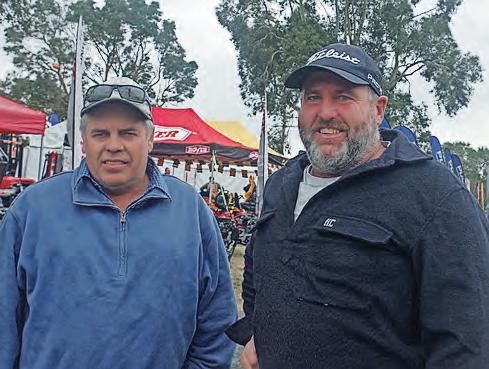


The three-day format on March 24-26 attracted 40,048 visitors and 480 exhibitors representing more than 710 brands.
“It’s a stronger program over three days than the four-day program,” Lardner Park CEO Craig Debnam said.
“It tells us the three-day program works for exhibitors and visitors.”
Farm World is a prime opportunity to see agricultural machinery and activities, and hear about some of the latest innovations and research related to farming.







“The focus is on presenting an agricultural field day, not just brand promotion,” Craig said.
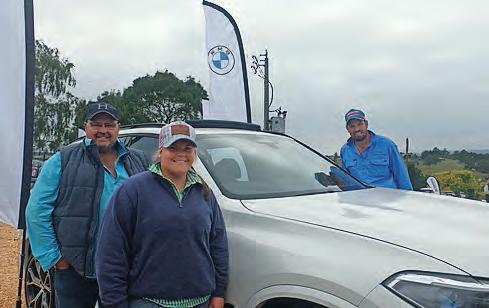
LARGE HERD OWNER AND DO MULTIPAL TRIPS FEEDING YOUR HERDS, THEN THE McINTOSH MULTI 4 OR MULTI 5 BALE FEEDER IS THE MACHINE FOR YOU.
bale feeder simple and easy to operate.
“It’s about the sales opportunities that people can make the most of at the field days, comparing equipment and prices in an enormous supermarket.








“Or they can register their interest with an exhibitor, for follow up deals over the next three to six months after Farm World.”












With tens of millions of dollars of machinery, equipment and other sales made at Farm World each year, the event stimulates the local economy, and further afield.
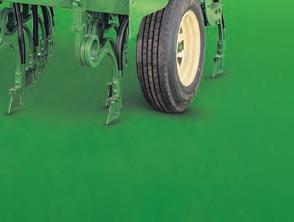







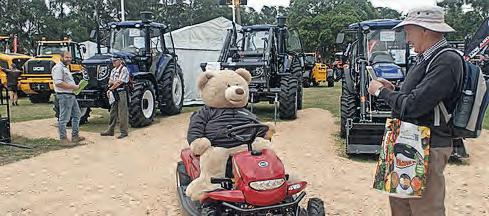


“Farm World attracts worldwide brands, through their local dealerships in Gippsland who provide service and support,” Craig said.



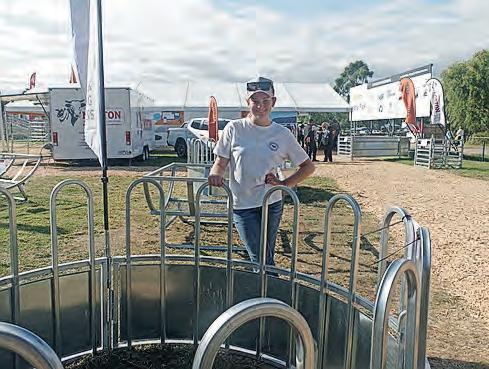


“If you buy the right product at the right price, it will service your business for many years and generations to come.”
The Farm World 2023 Best Agribusiness Exhibit was awarded to CLAAS Harvest Centre Gippsland, located at Warragul, for their comprehensive display. Apart from local dealerships making a large number of sales at Farm World, the CLAAS tractor factory at Le Mans is celebrating its 20th anniversary of production this year.
Continued on page 38



 Geoff Murray from Nar Nar Goon.
Chloe Norris and Craig Wearne from Yallourn North looking at side-by-side vehicles.
Neville Beamish from Budgerre talking about trees with VicForests’ Wally Notman.
Julie and Clive Kilgour of Wonthaggi looking at a new lawn mower, with the help of Marriotts’ Jim Welsh.
Visiting Farm World from Connewarre and considering the 30m3 spreader are Jen Christie, and Ken and Peter Armstrong (front).
Des Micah from Warragul taking a photo for his grandchildren of Teddy on the four-wheel drive mower at the Tanner Track display at Farm World.
Ken Nicklen from Moe looks at the Inlon TYM tractor at Farm World.
Danae Sawers from Glengarry with a hay feeder at the Gallagher Australia display of Norton equipment.
Kathryn Bordonaro and Tamara and Grant Phillips catching up with Chris Marinou and Dominic Westendorf from CBA, major sponsors of Farm World Field Days.
Geoff Murray from Nar Nar Goon.
Chloe Norris and Craig Wearne from Yallourn North looking at side-by-side vehicles.
Neville Beamish from Budgerre talking about trees with VicForests’ Wally Notman.
Julie and Clive Kilgour of Wonthaggi looking at a new lawn mower, with the help of Marriotts’ Jim Welsh.
Visiting Farm World from Connewarre and considering the 30m3 spreader are Jen Christie, and Ken and Peter Armstrong (front).
Des Micah from Warragul taking a photo for his grandchildren of Teddy on the four-wheel drive mower at the Tanner Track display at Farm World.
Ken Nicklen from Moe looks at the Inlon TYM tractor at Farm World.
Danae Sawers from Glengarry with a hay feeder at the Gallagher Australia display of Norton equipment.
Kathryn Bordonaro and Tamara and Grant Phillips catching up with Chris Marinou and Dominic Westendorf from CBA, major sponsors of Farm World Field Days.
Continued from page 37


The best overall exhibit was PFG Australia in a joint display with local machinery dealership, Ag Farm Machinery at Warragul.











The Commonwealth Bank hosted a number of speakers, focusing on genetics, the dairy-beef market potential, and regenerative agriculture.




Lardner Park relies on considerable goodwill within the community to host Farm World field days, its biggest event each year. Warragul Lions Club, Warragul Rotary Club, Drouin Rotary Club, Lardner Primary School, Drouin South Primary School, Warragul Industrials Football Club, Ellinbank Football Club, local CWA and CFA clubs all contribute volunteers to assist in running the event.




In a quid pro quo, approximately $70,000 was donated this year from the Farm World event to these community groups.












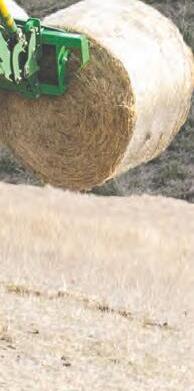


 Rod Gundrill from Chapmans Machinery and Stefan Bleicher from Caldermeade checking the integrity of the ROPS on the Kubota tractor.
Andrew Waddingham (right) from Chum Creek asking John Moloney about the Landpride slasher.
Hank and Mark Schellekens looking at a pulveriser, to remove and mulch trash pasture growth in their paddocks at Neerim South and Drouin.
Kayla, William and Jeff Hollier from Mt Eccles purchased a 5.5 tonne bobcat from Clark Equipment at Farm World.
Tractors at Farm World attracted the interest of Steve Poon from Willung South. He is talking with David Knoke from Clark Equipment.
Rod Gundrill from Chapmans Machinery and Stefan Bleicher from Caldermeade checking the integrity of the ROPS on the Kubota tractor.
Andrew Waddingham (right) from Chum Creek asking John Moloney about the Landpride slasher.
Hank and Mark Schellekens looking at a pulveriser, to remove and mulch trash pasture growth in their paddocks at Neerim South and Drouin.
Kayla, William and Jeff Hollier from Mt Eccles purchased a 5.5 tonne bobcat from Clark Equipment at Farm World.
Tractors at Farm World attracted the interest of Steve Poon from Willung South. He is talking with David Knoke from Clark Equipment.















